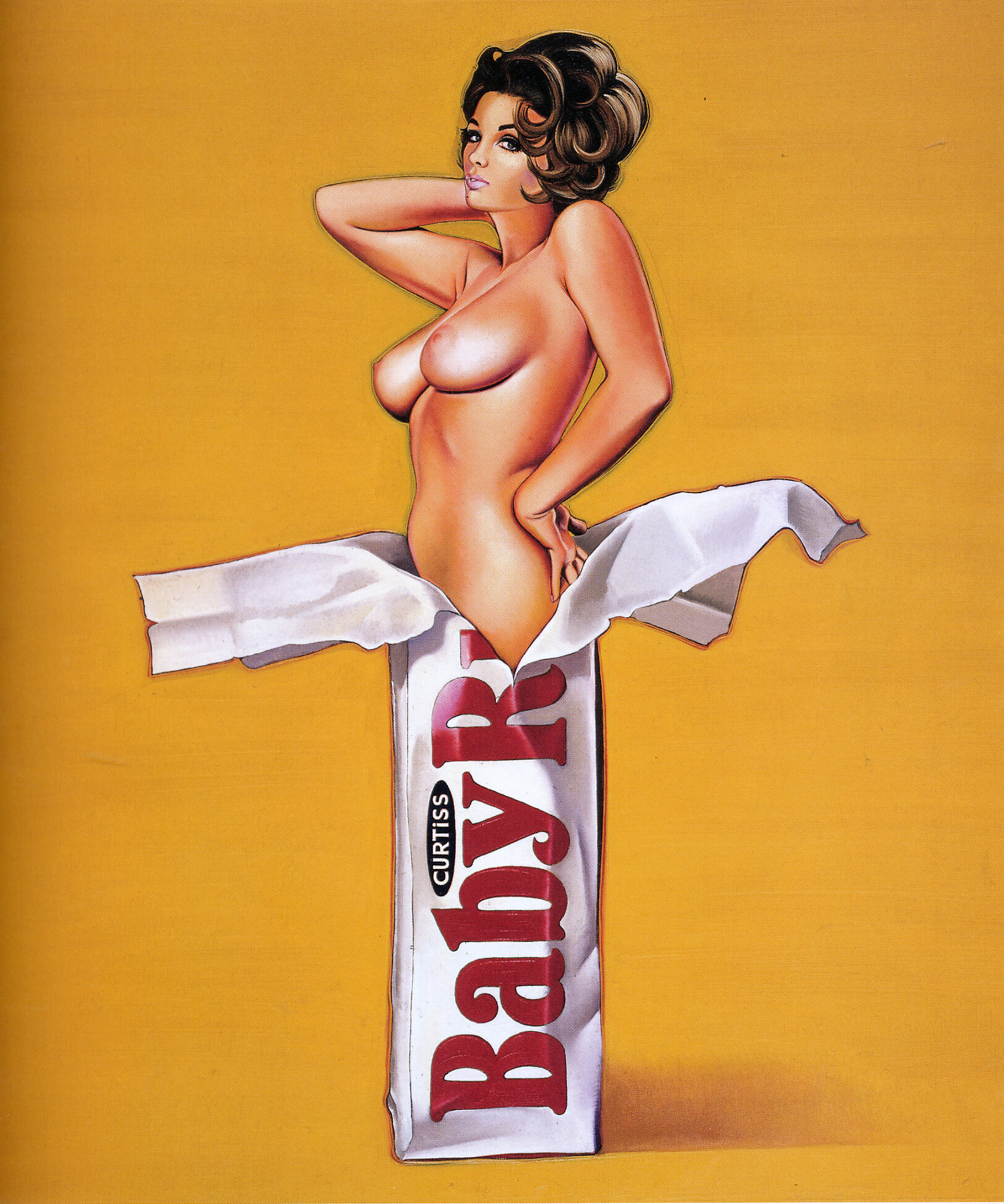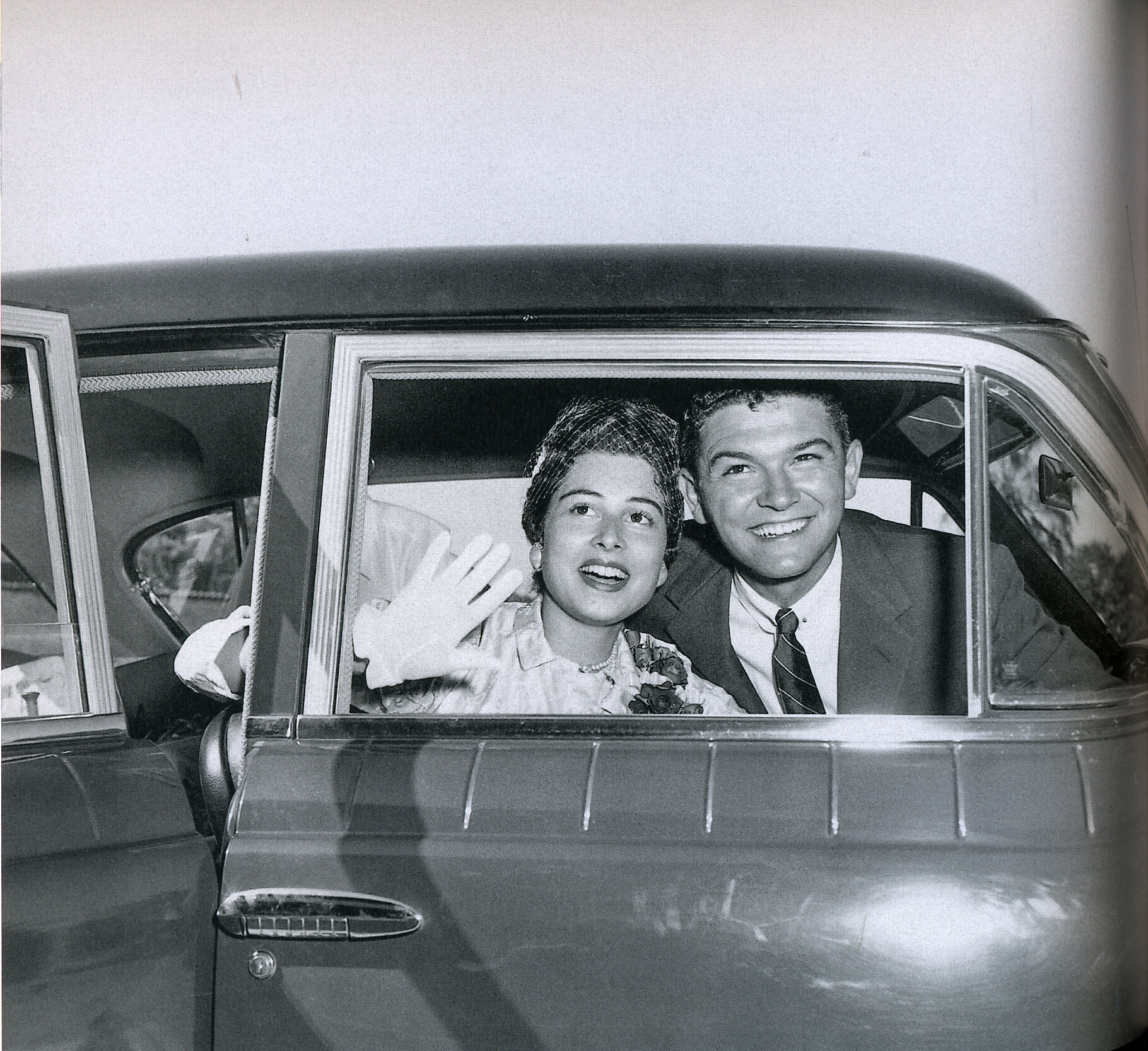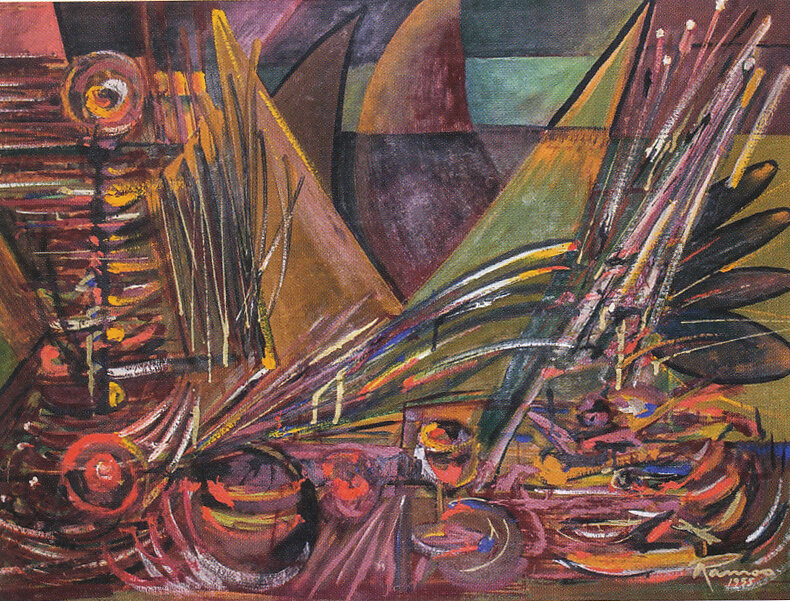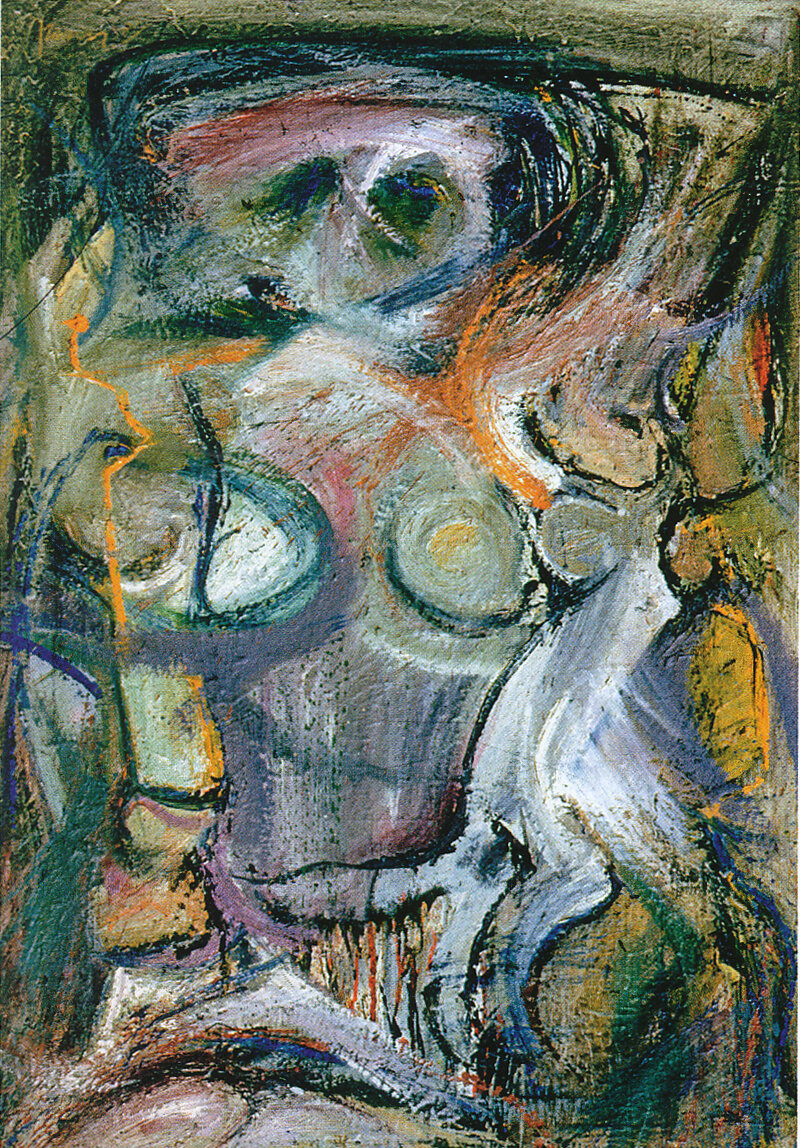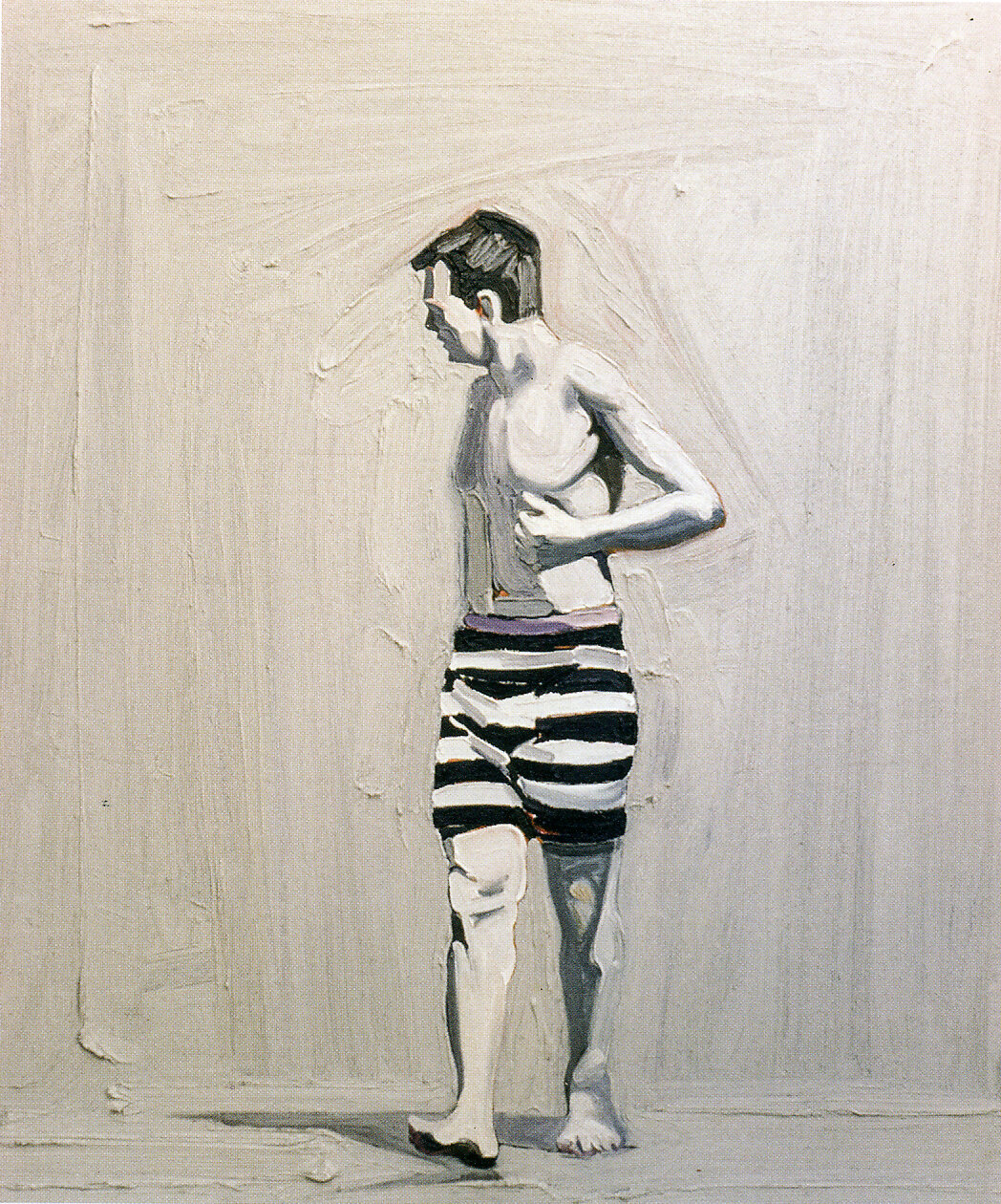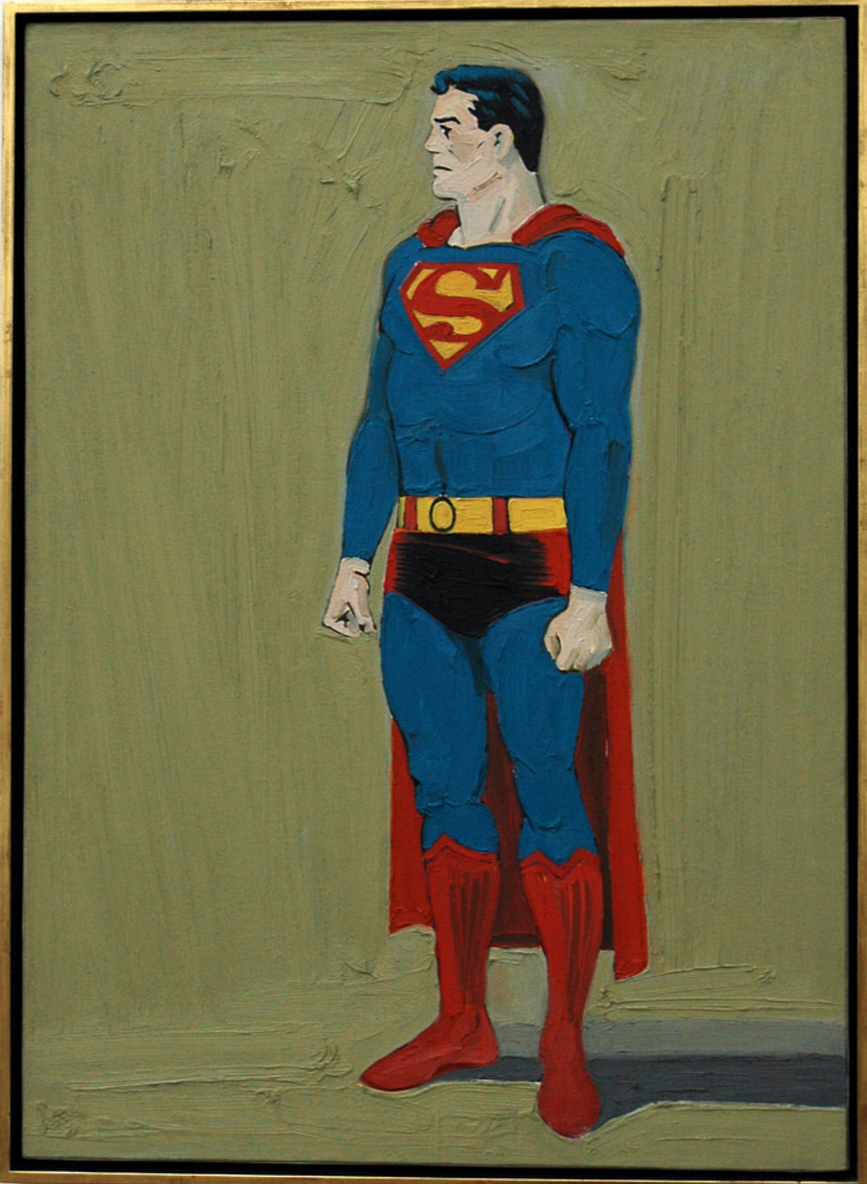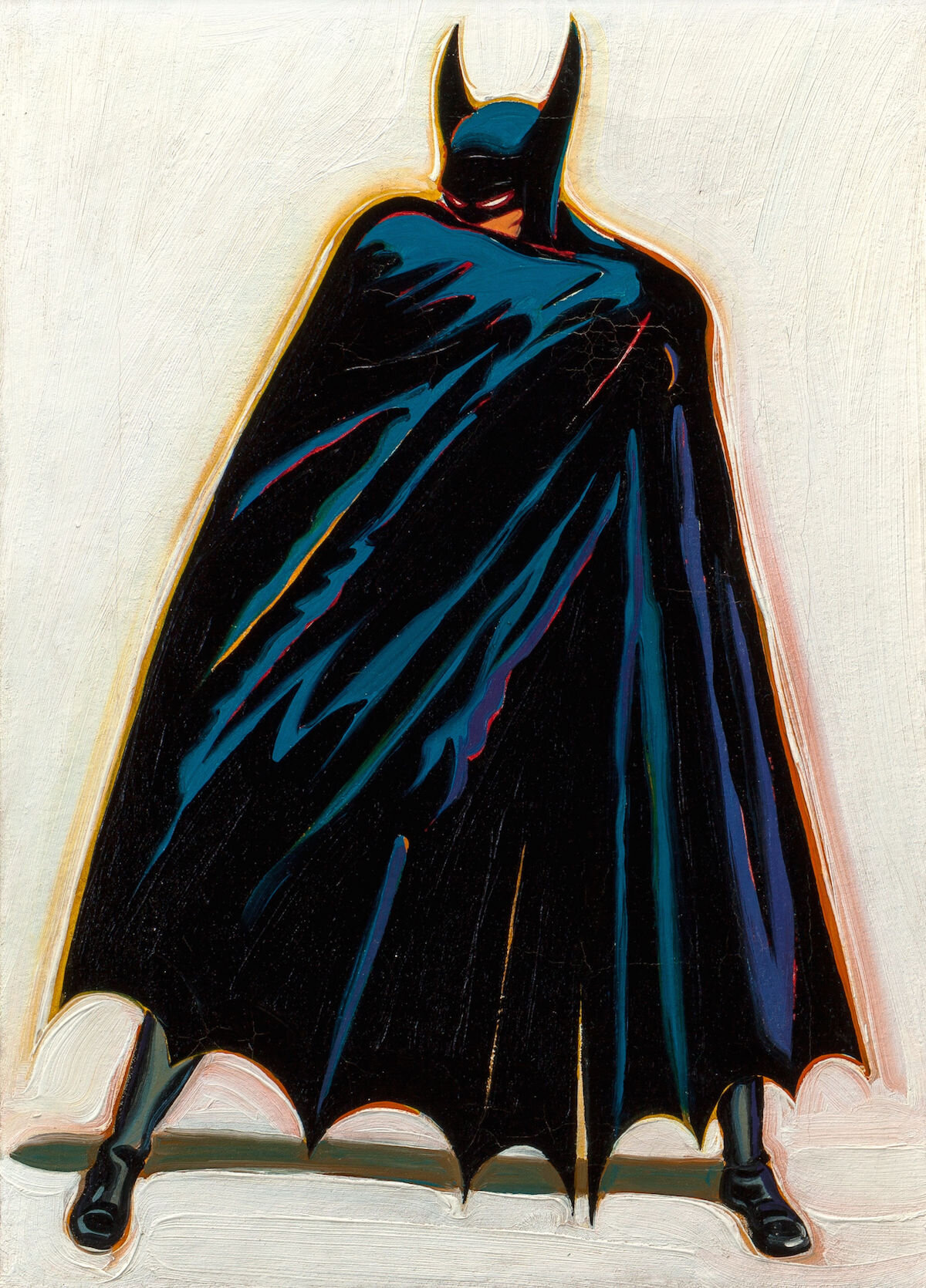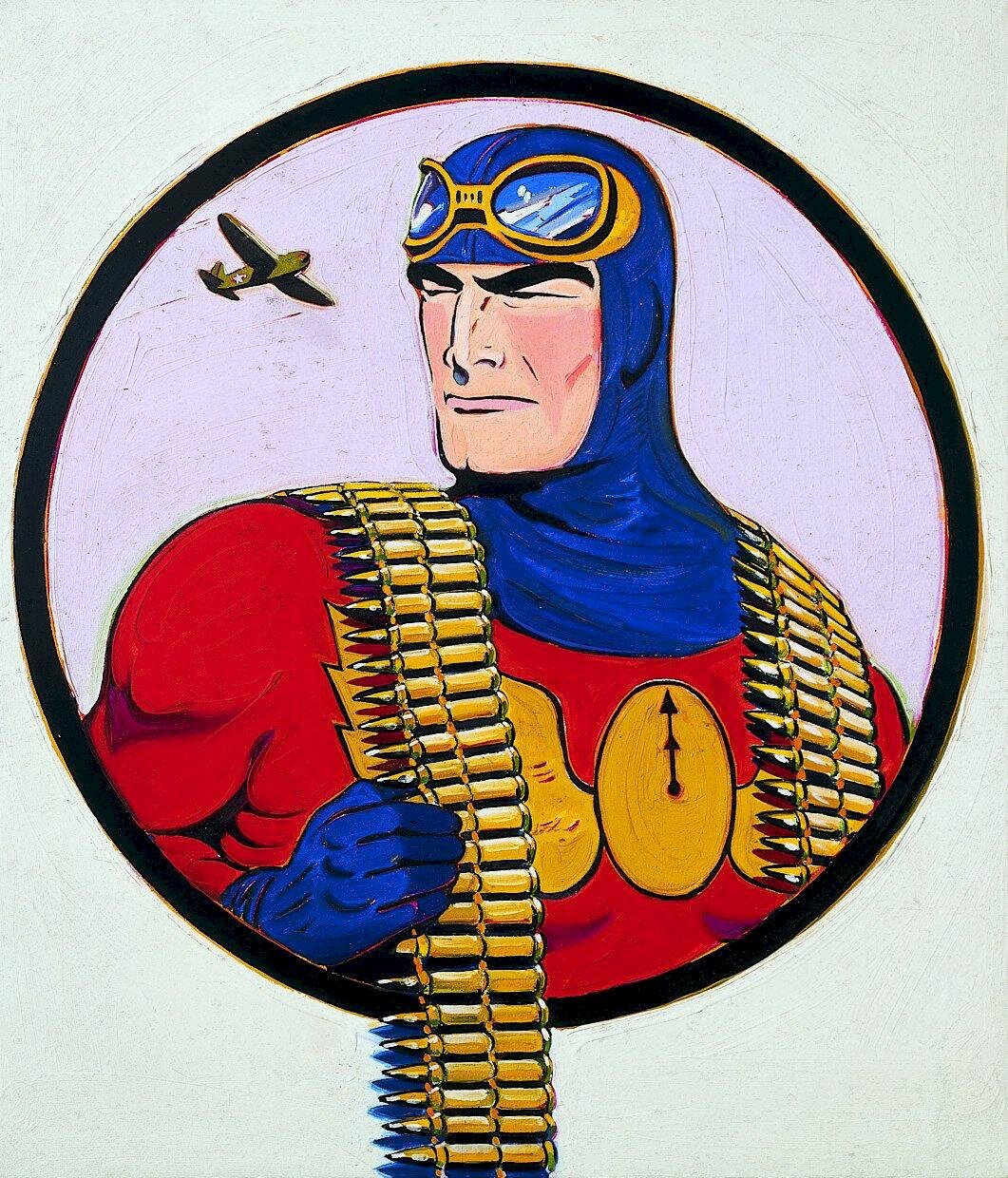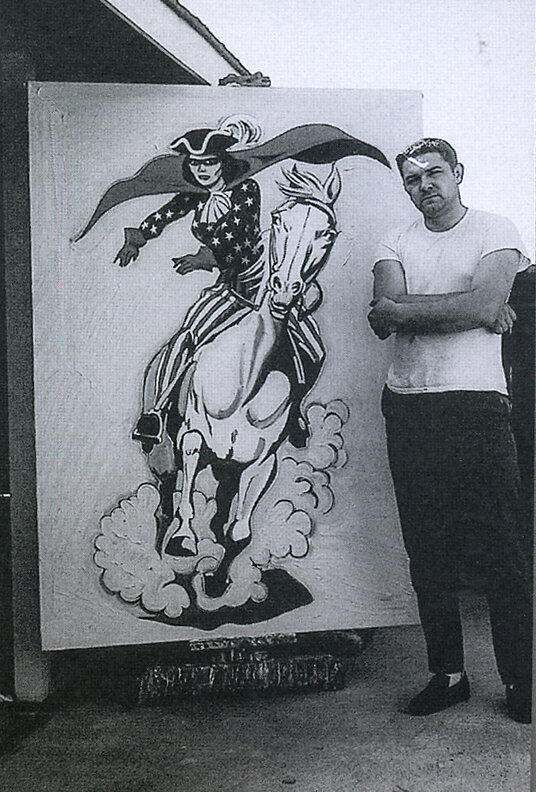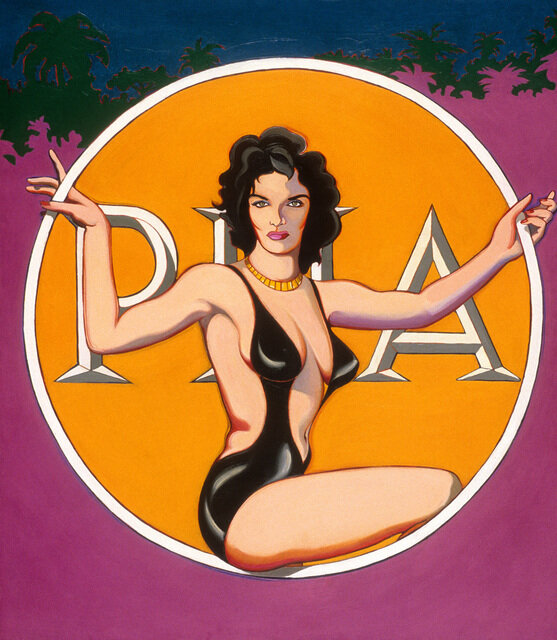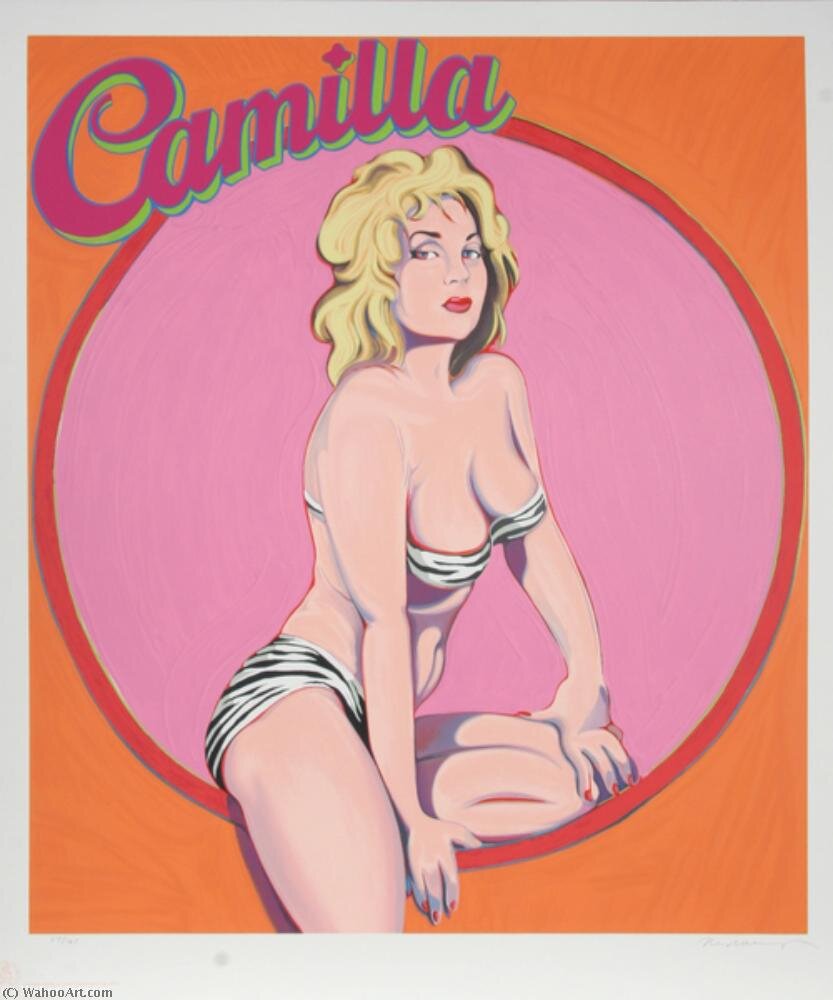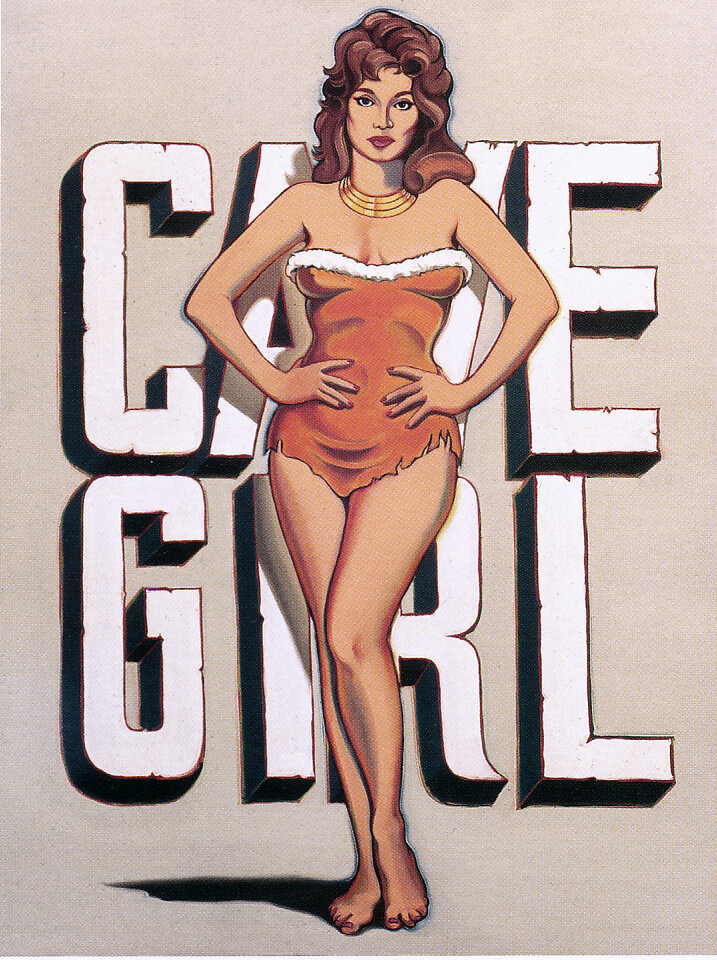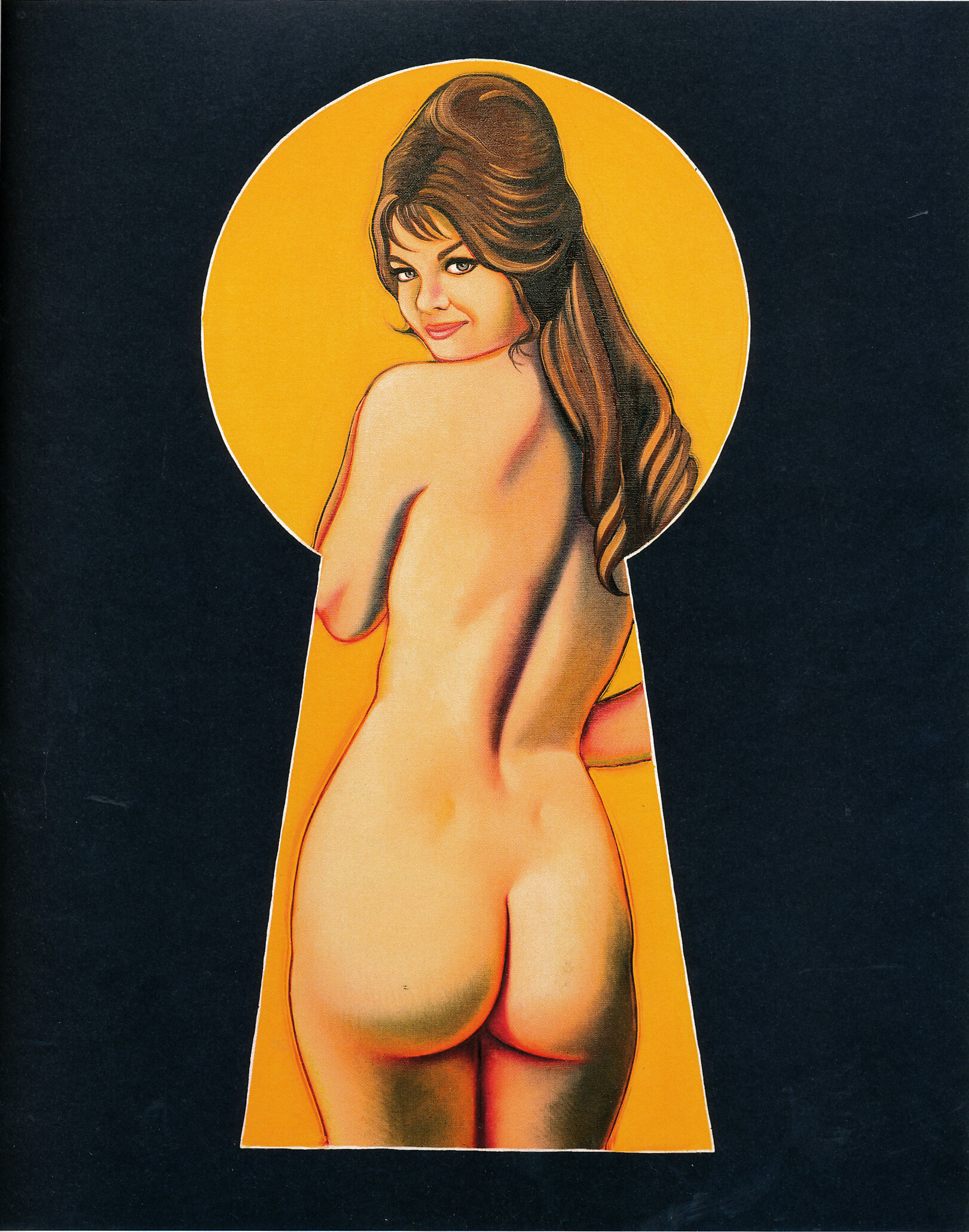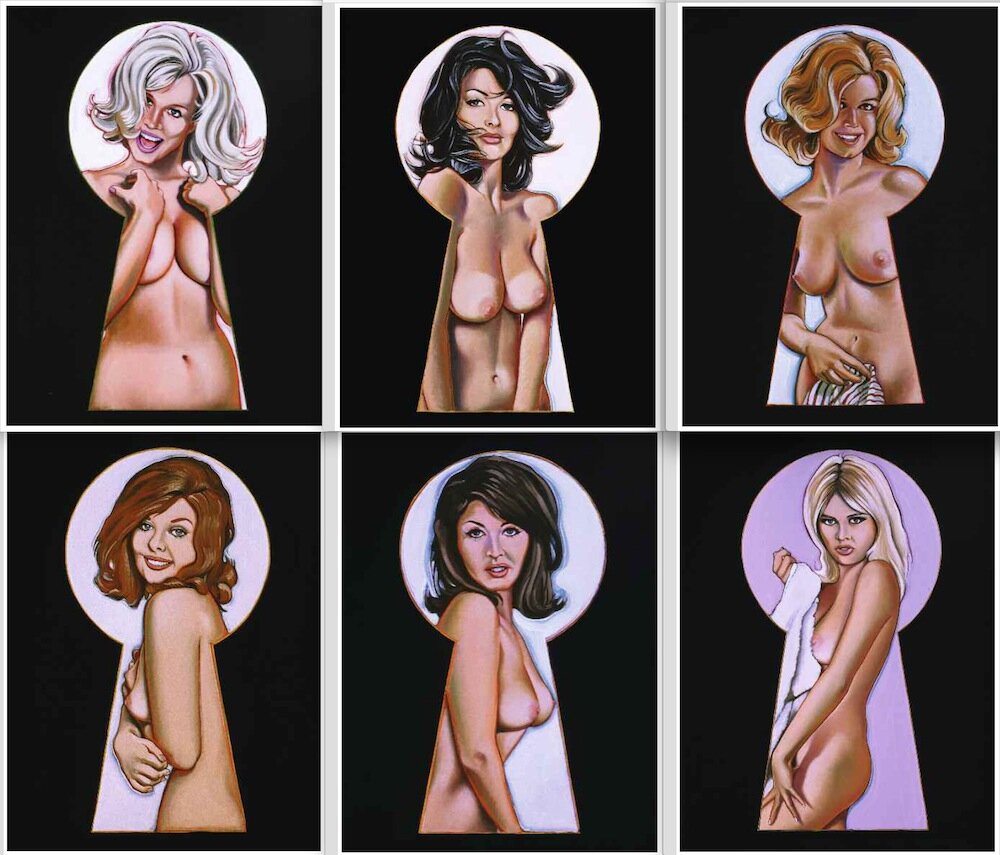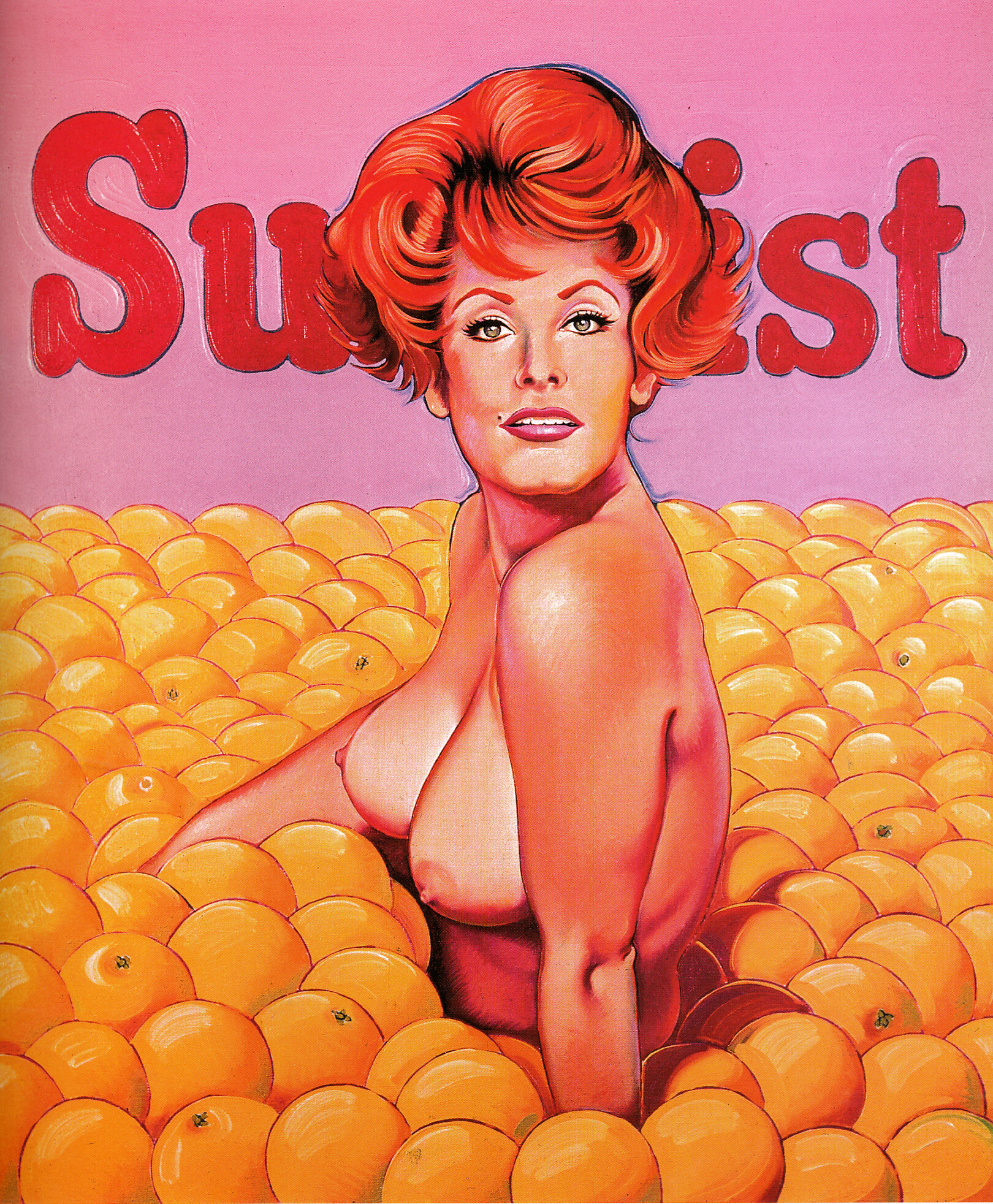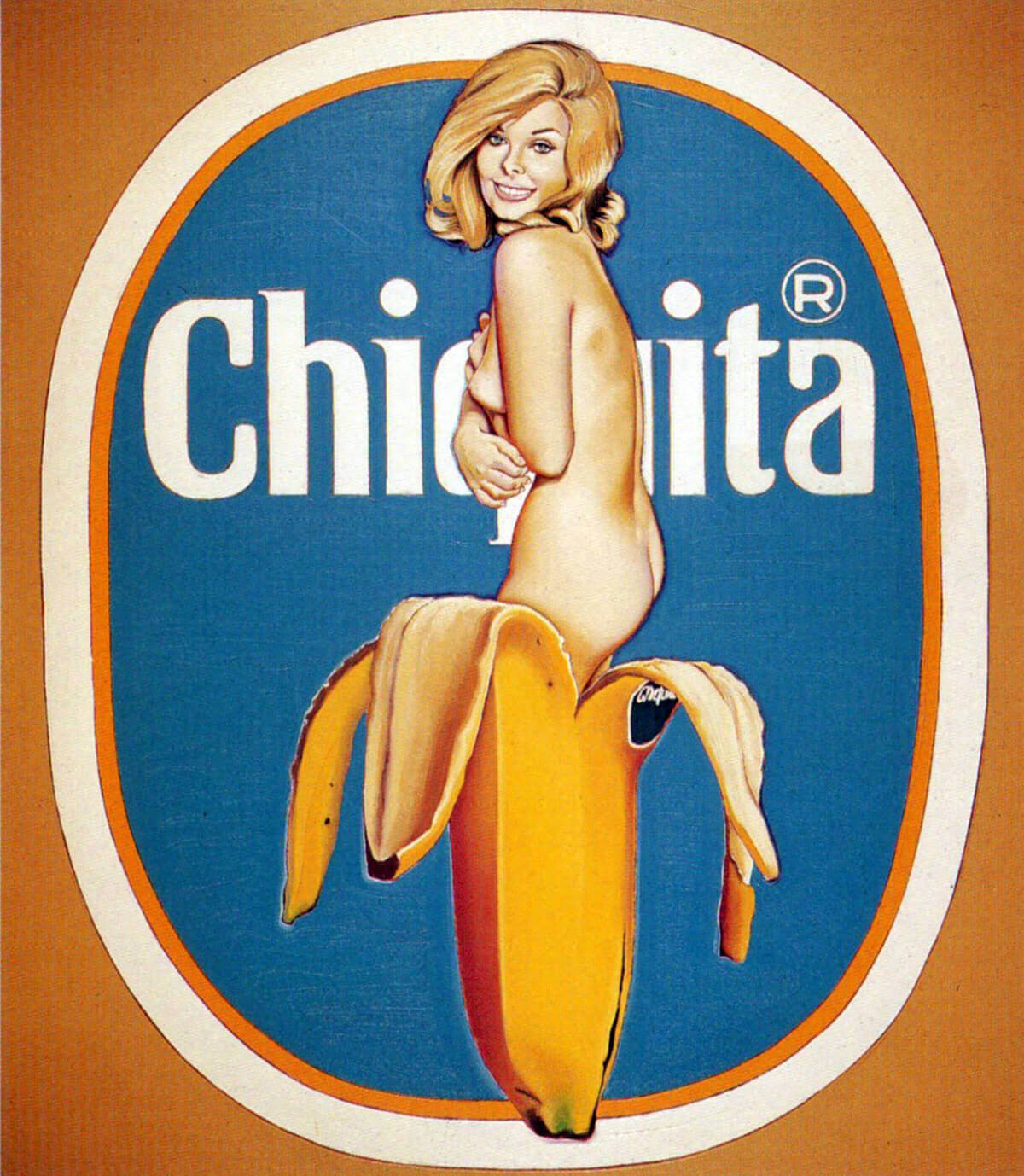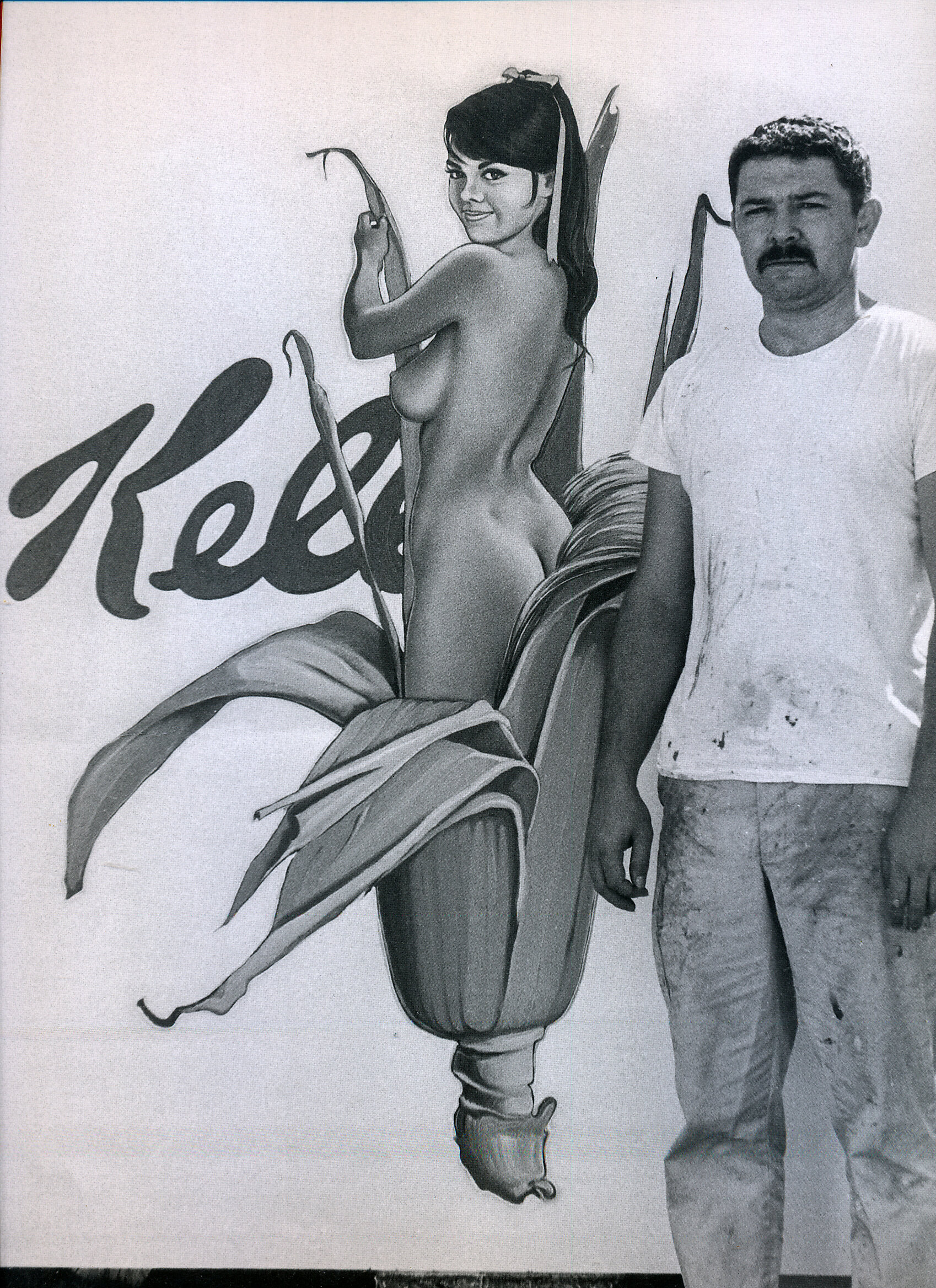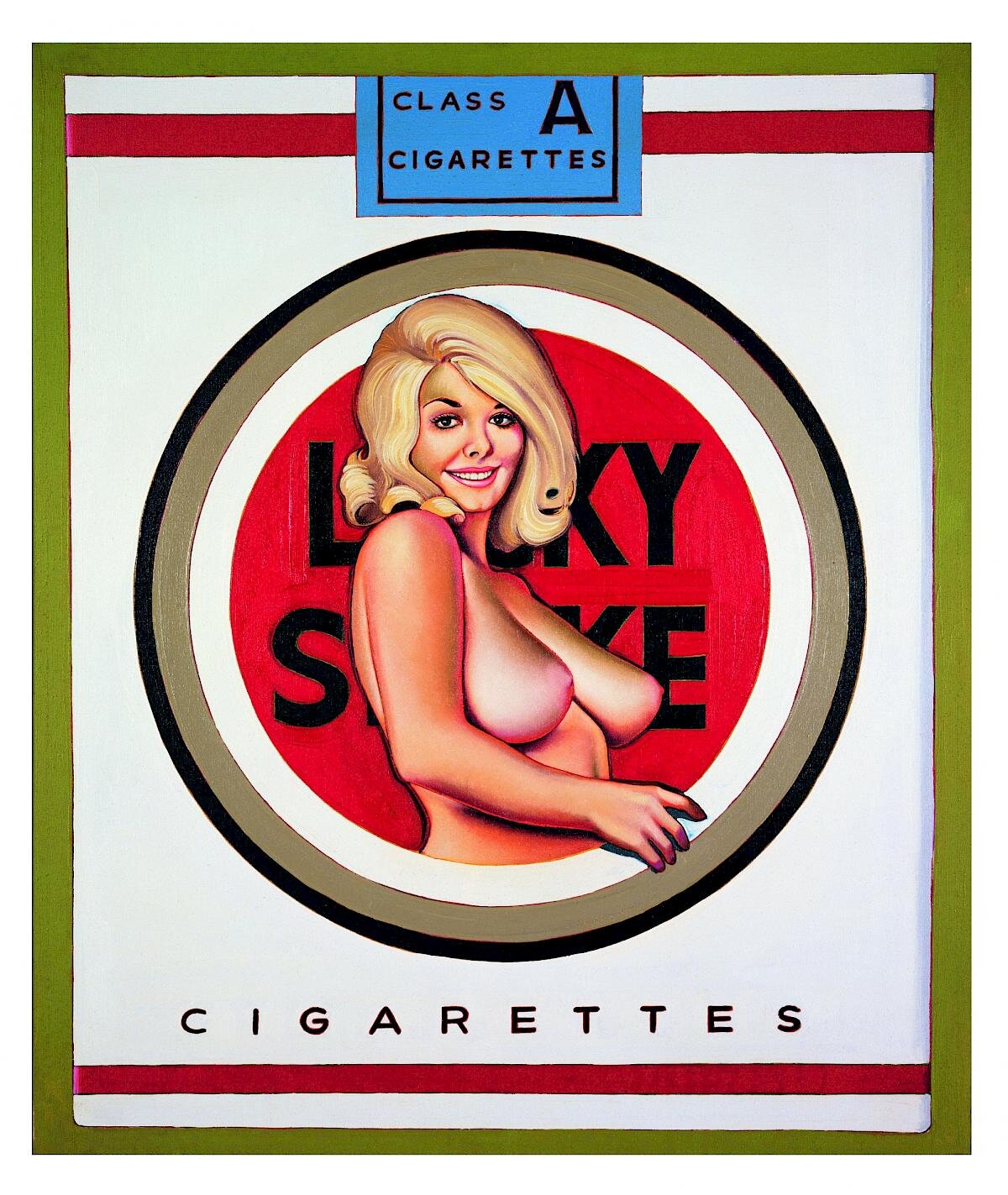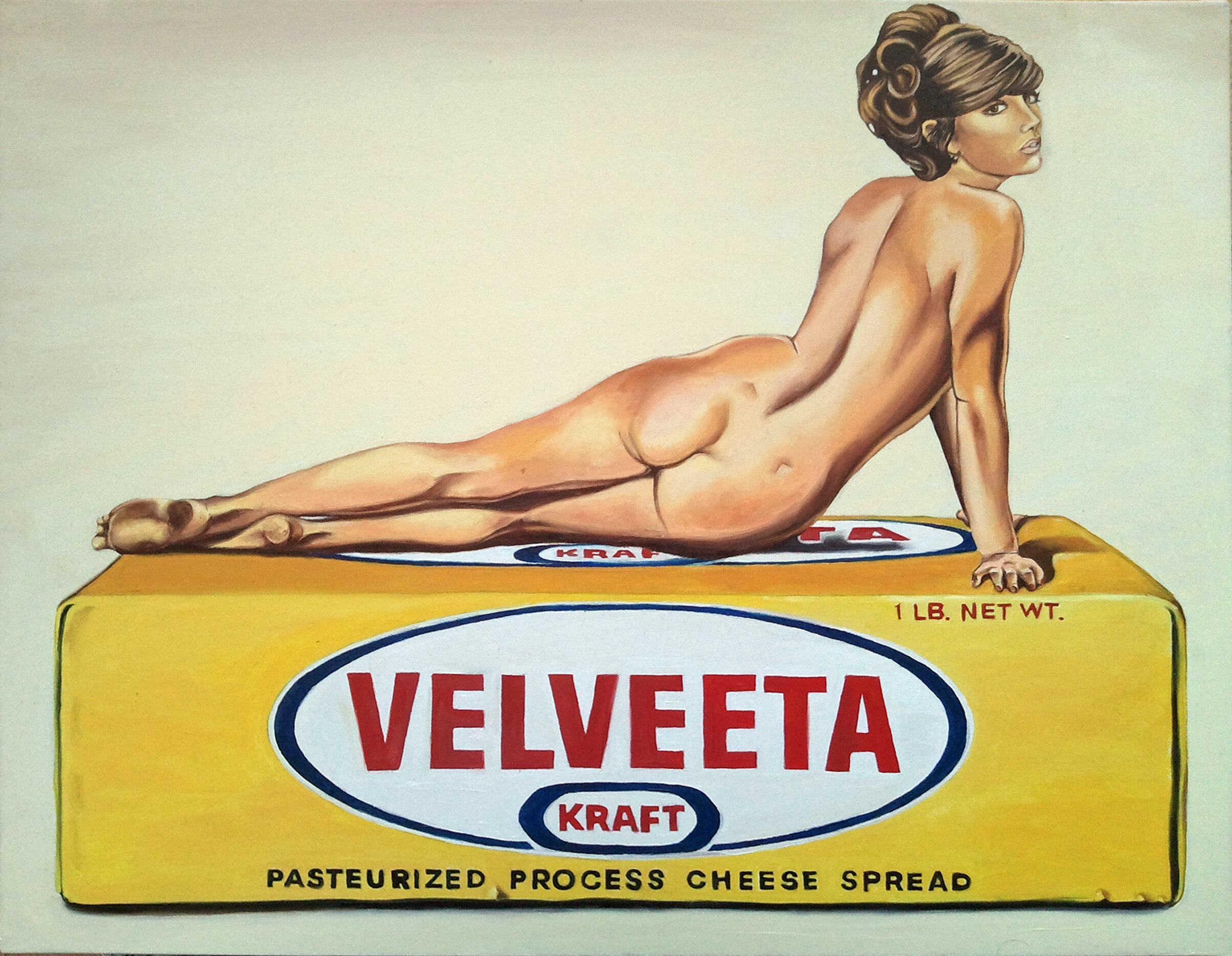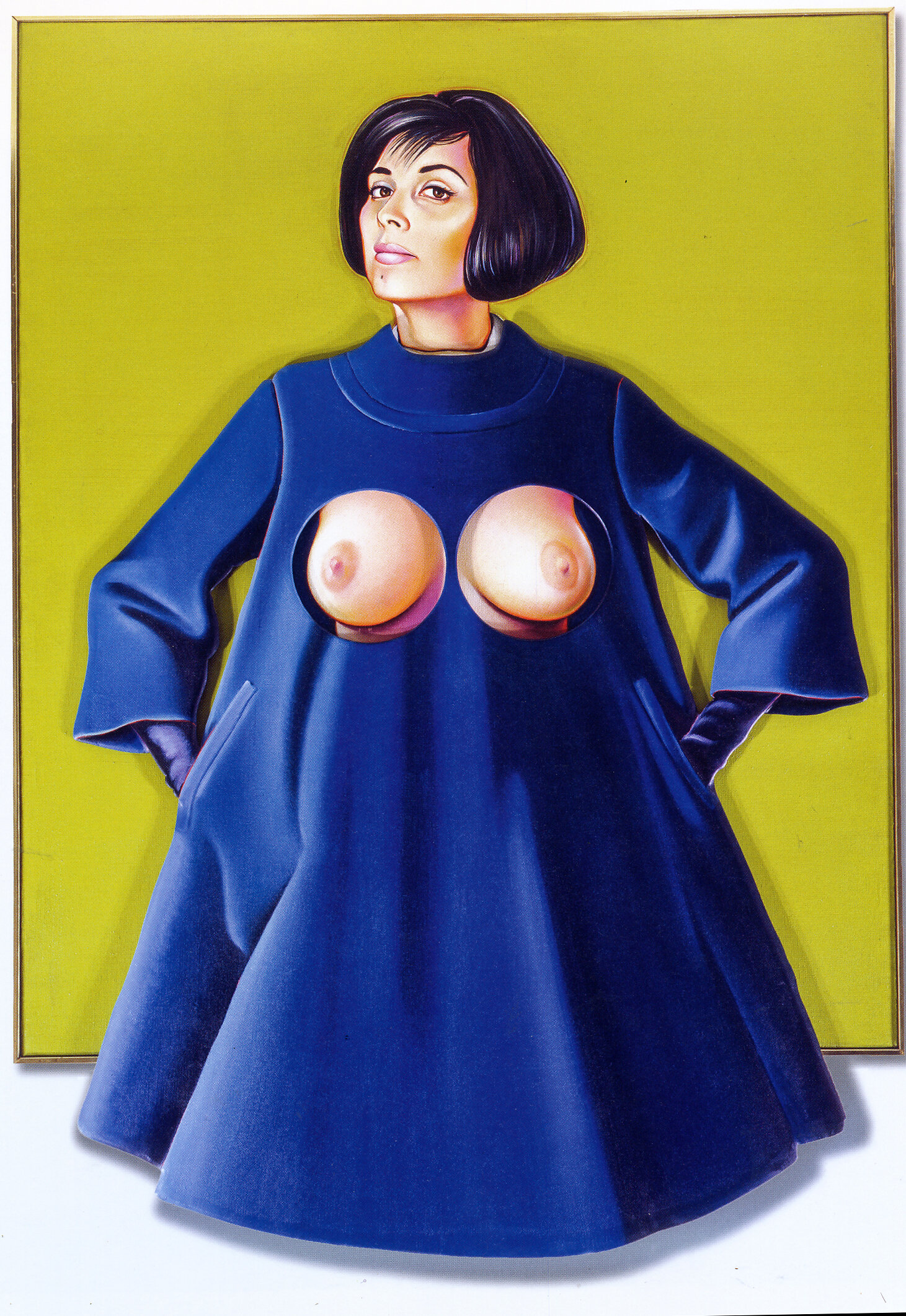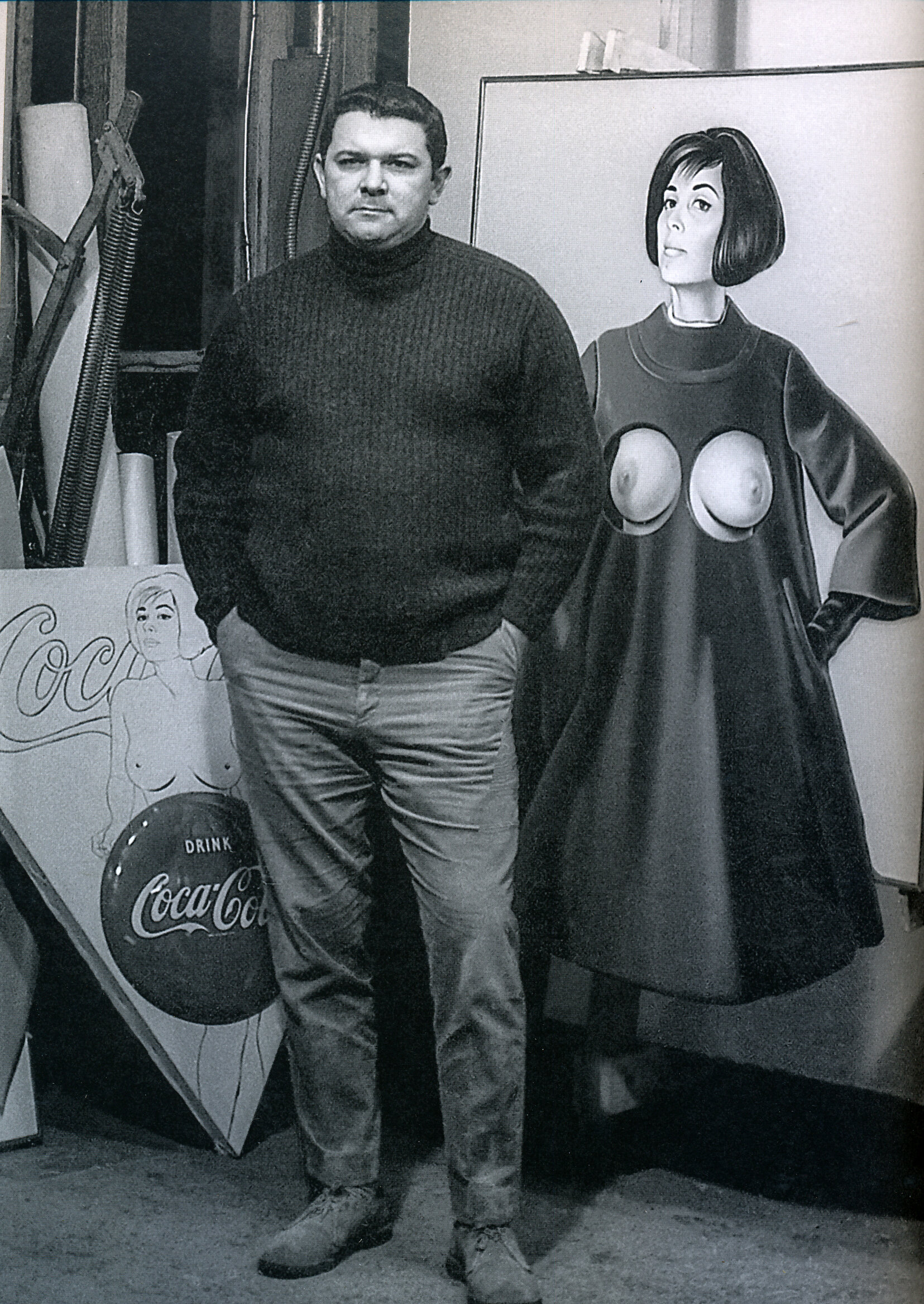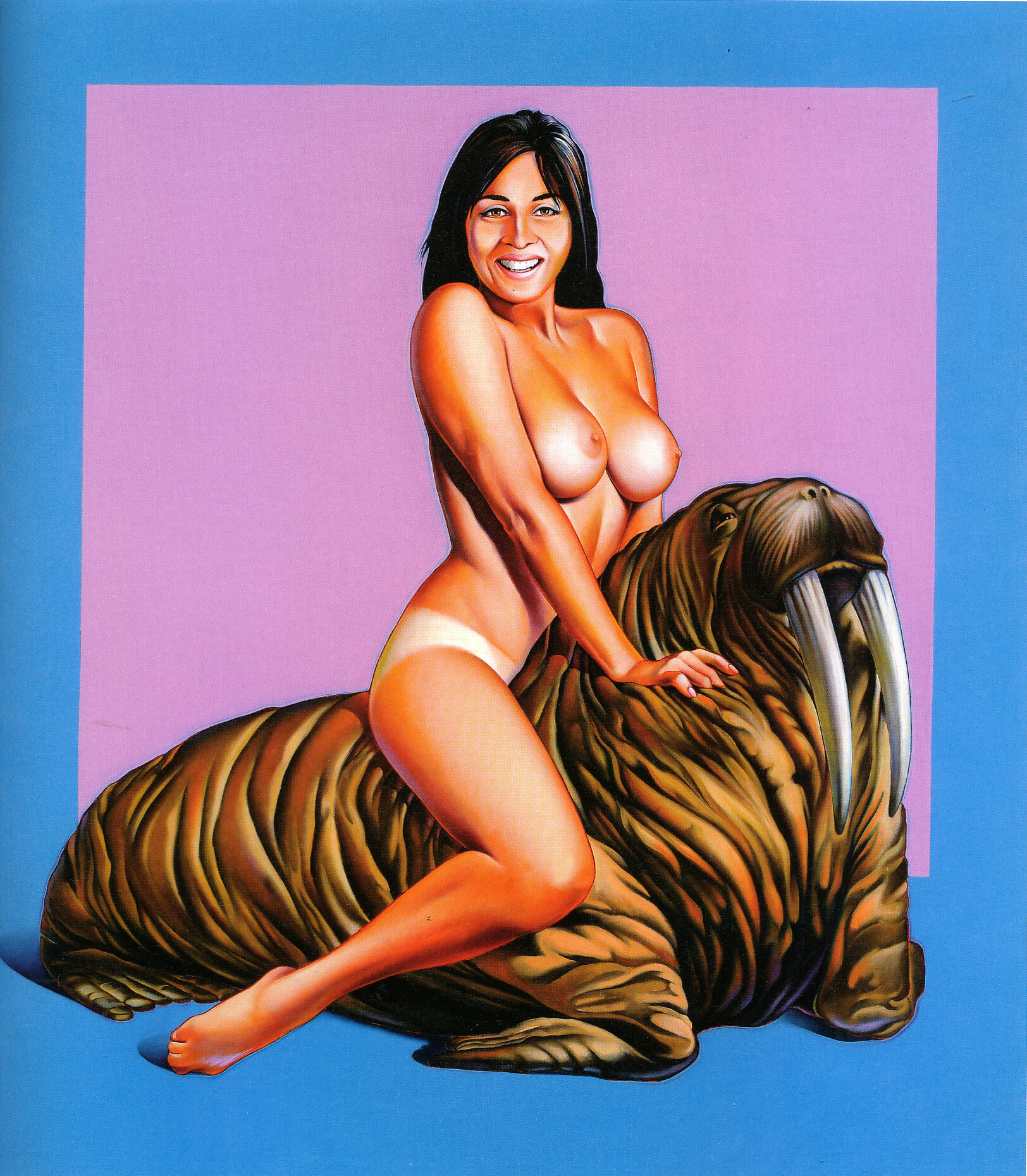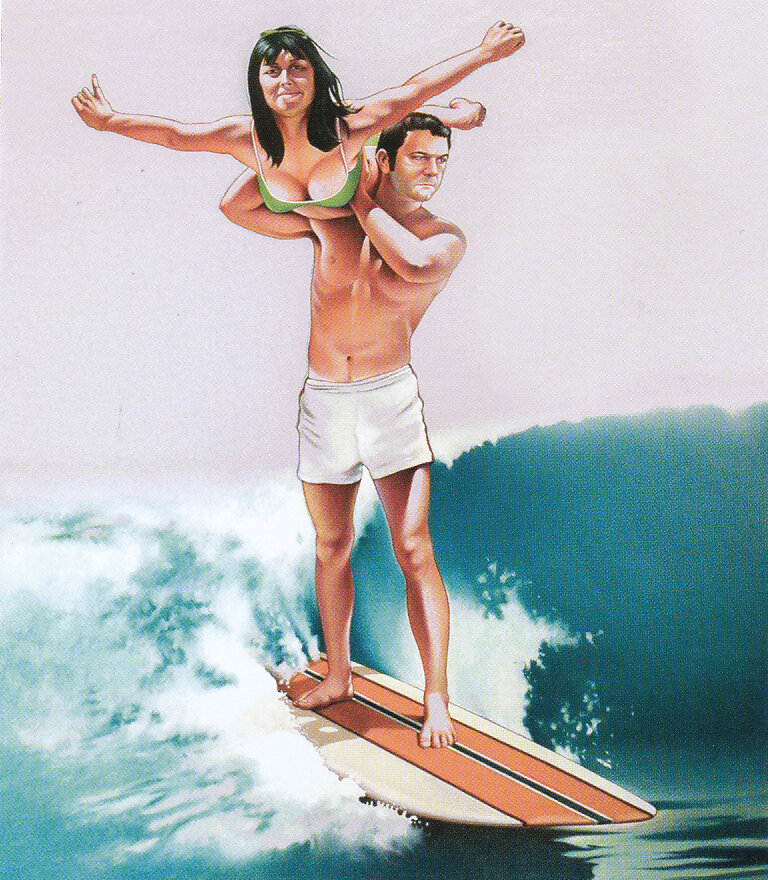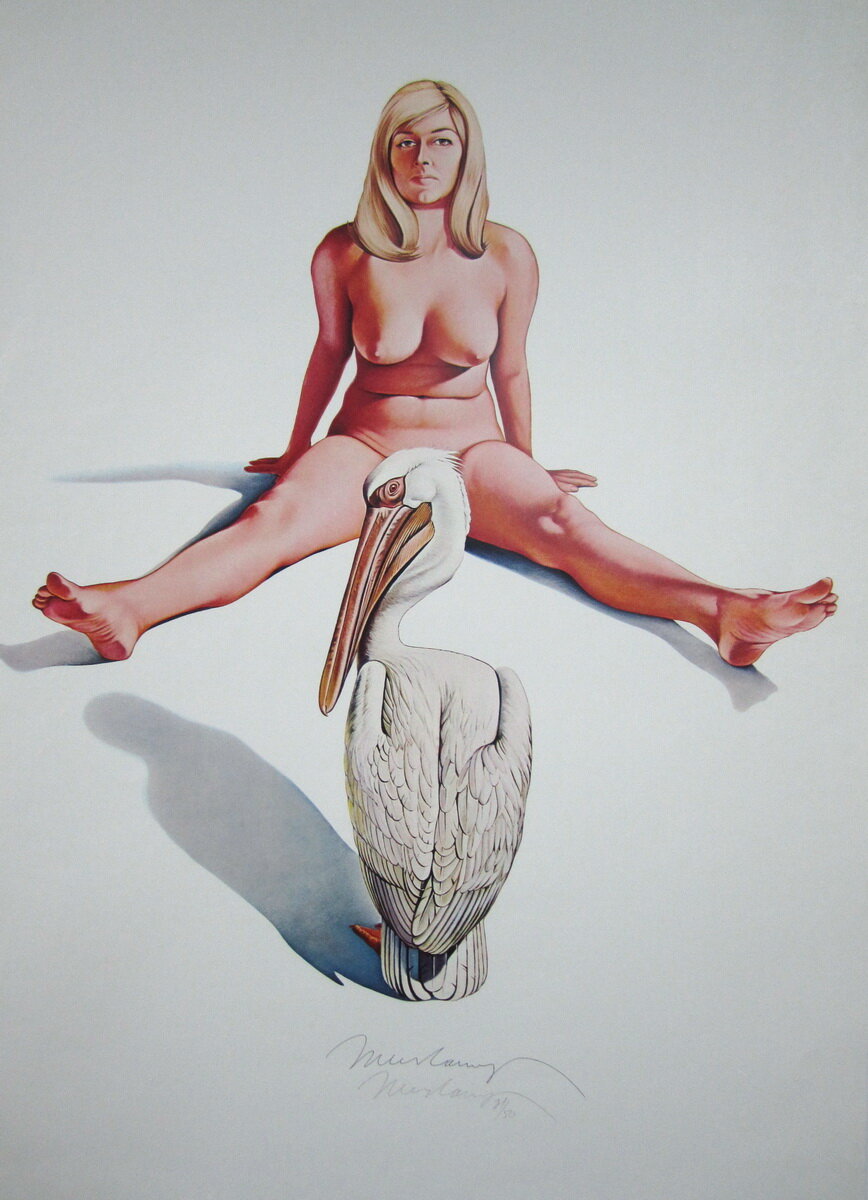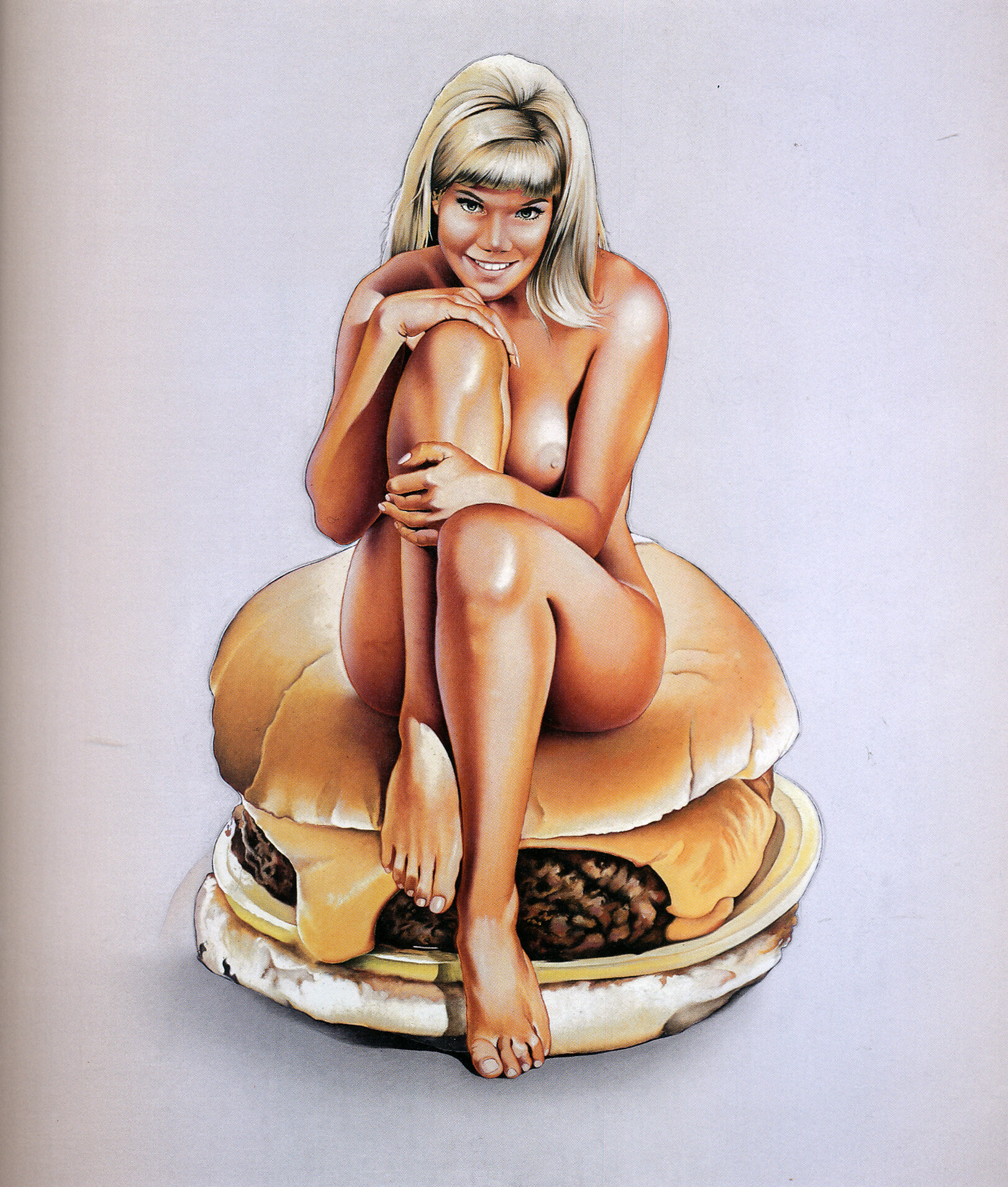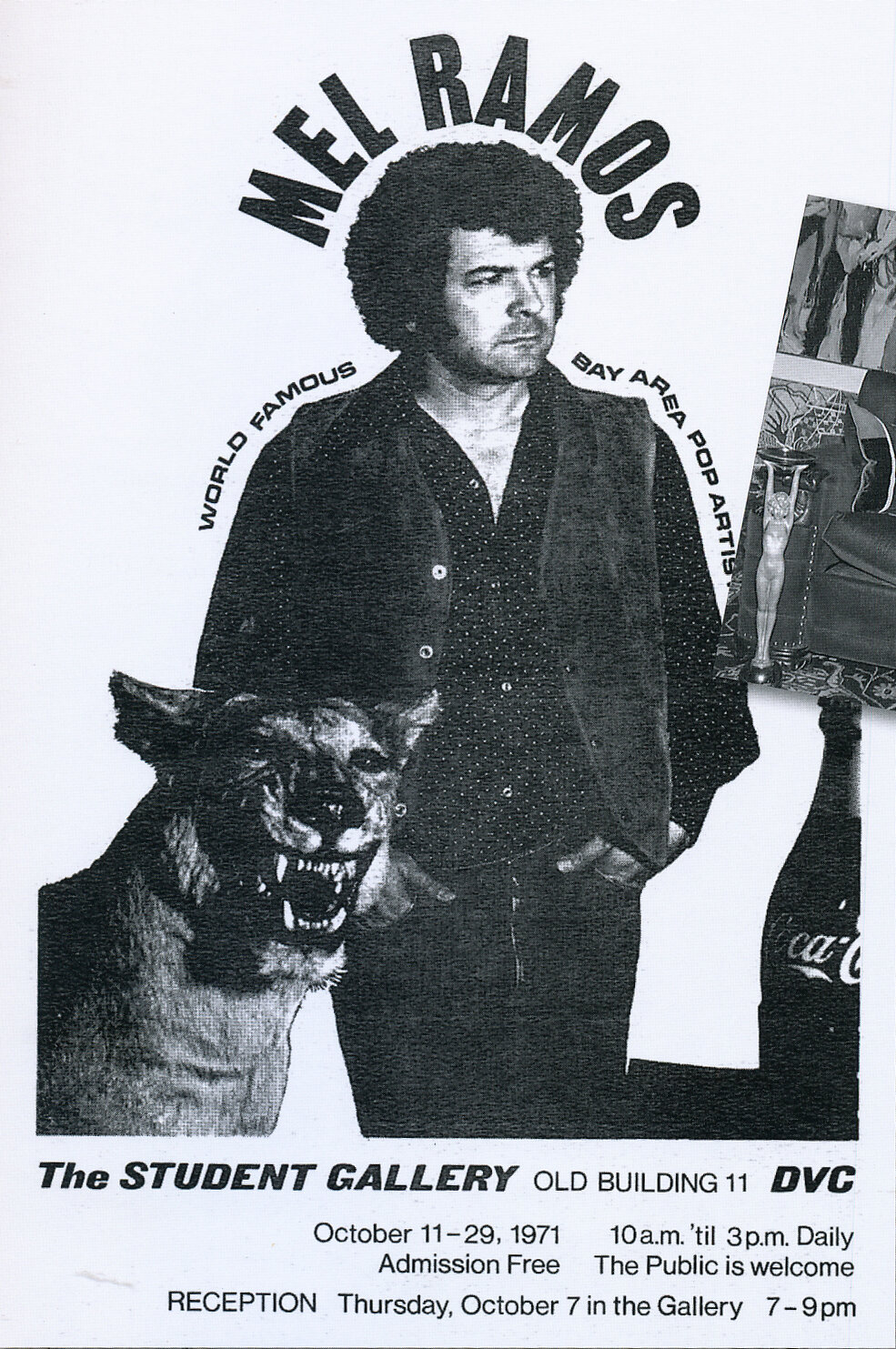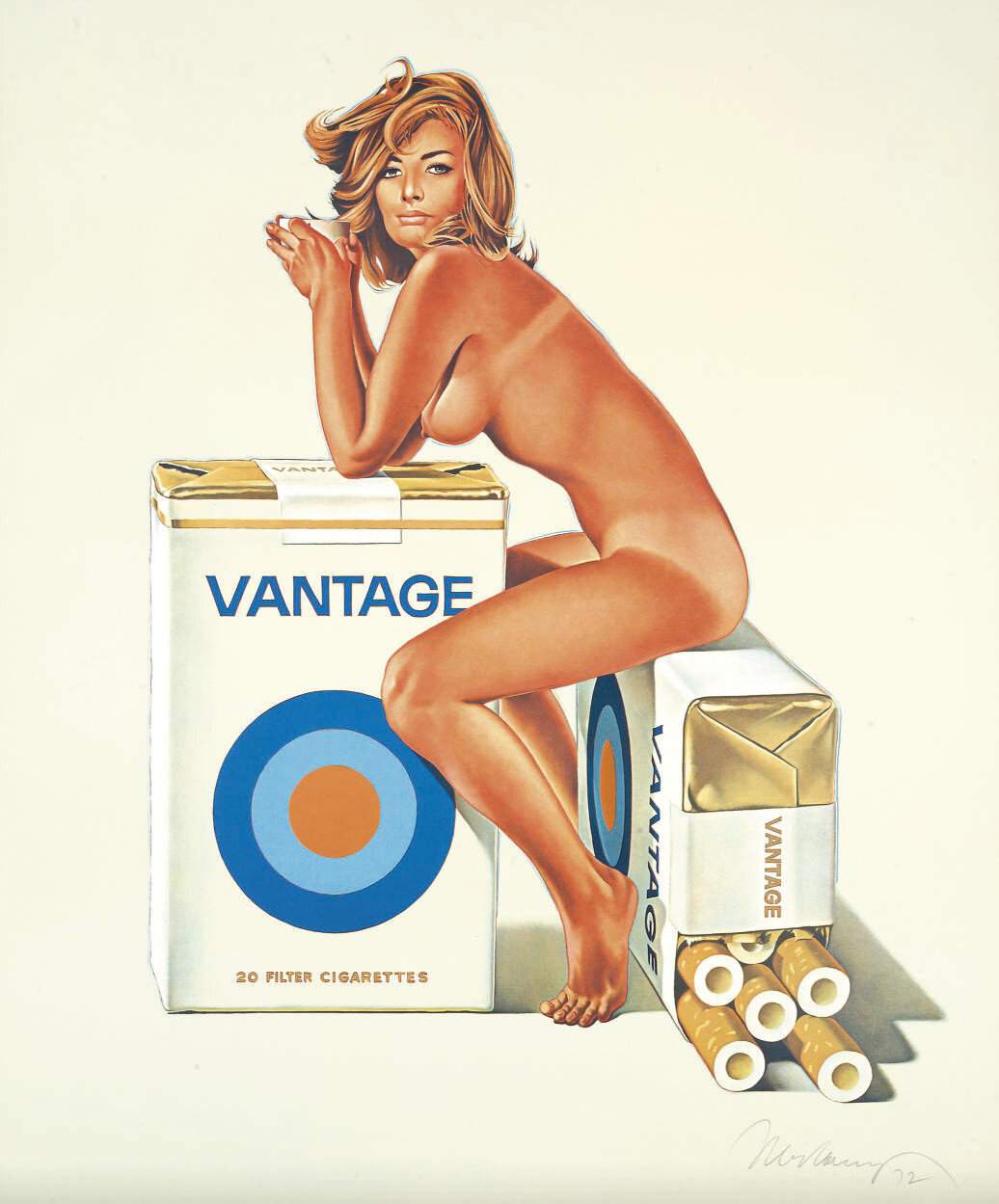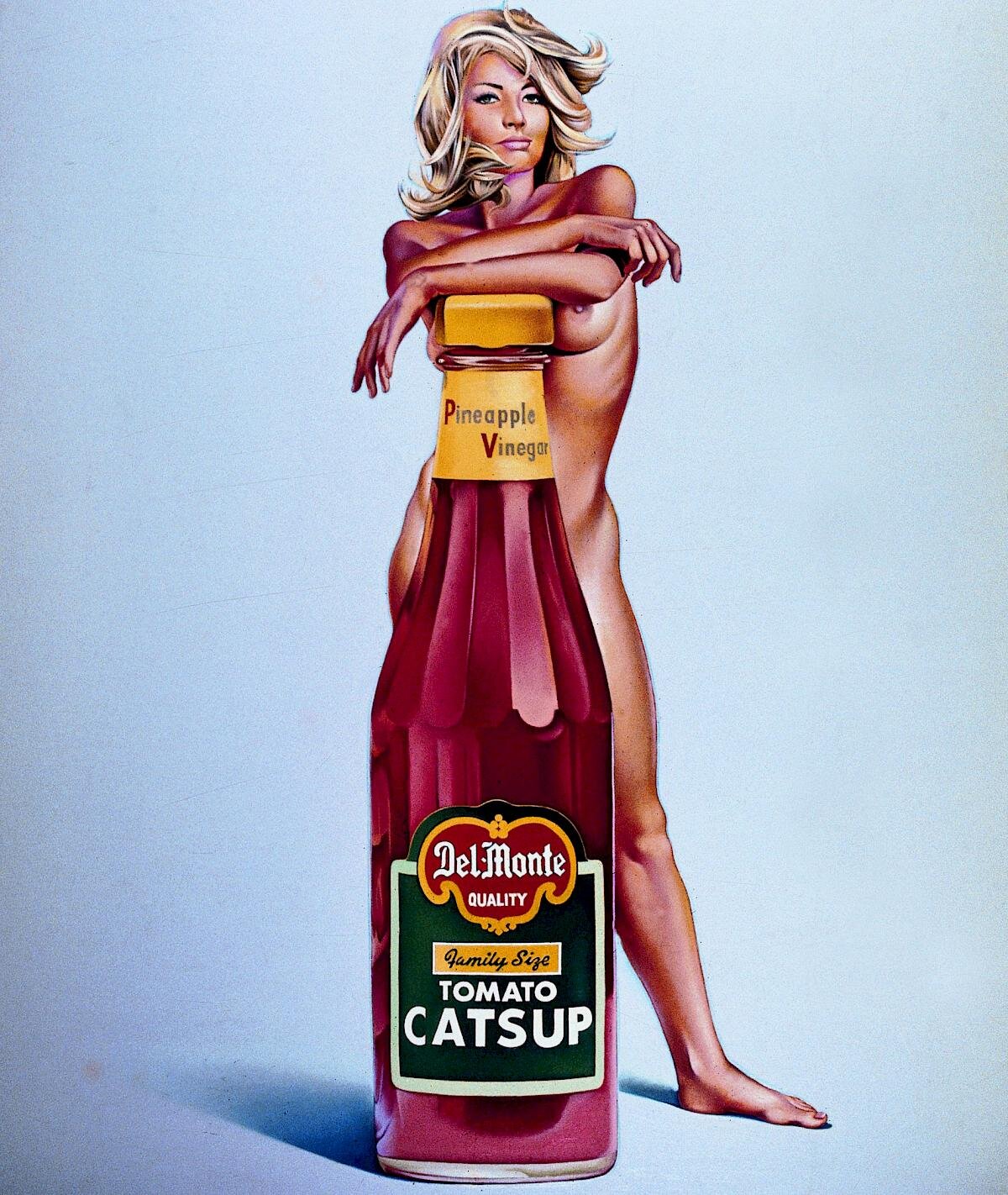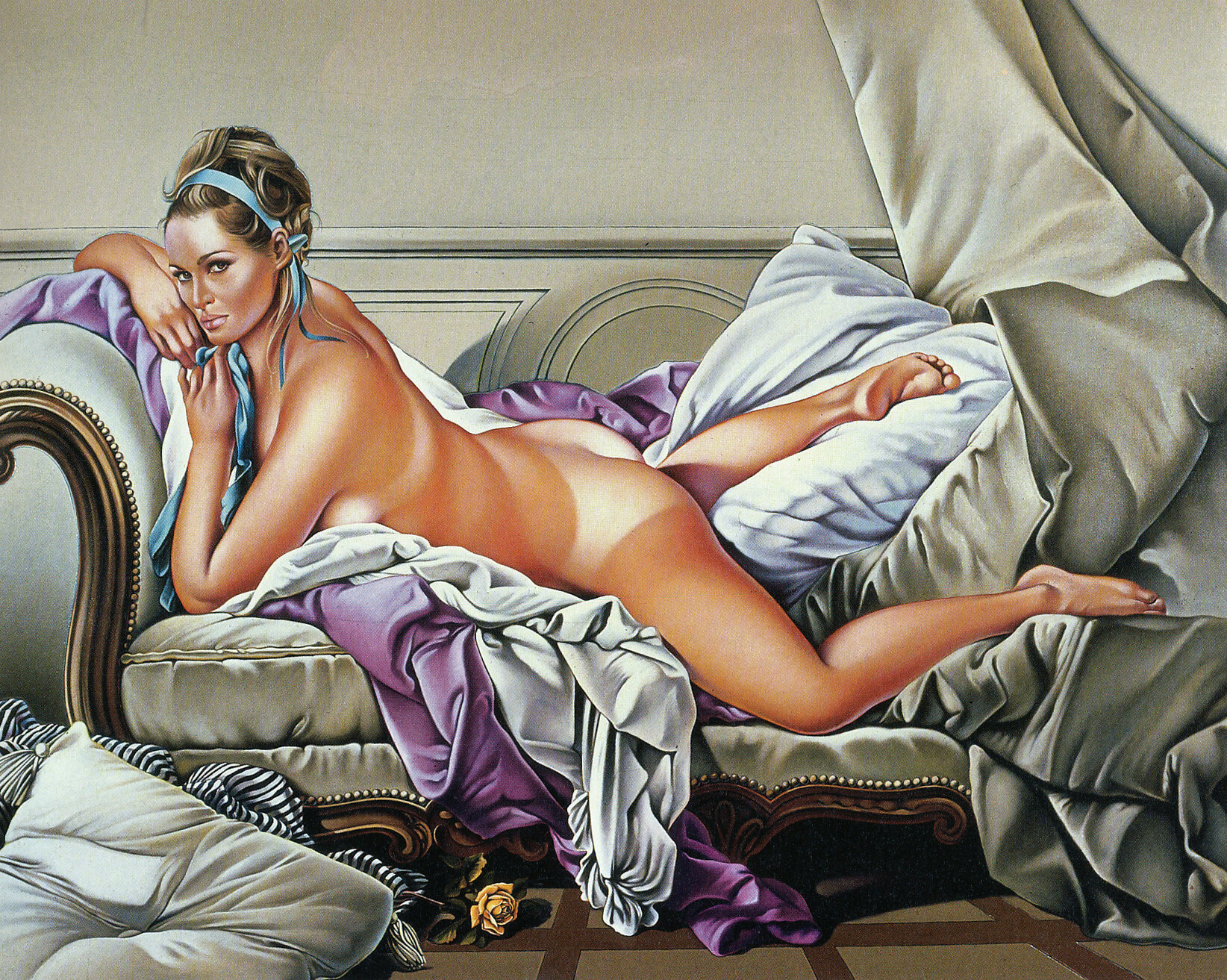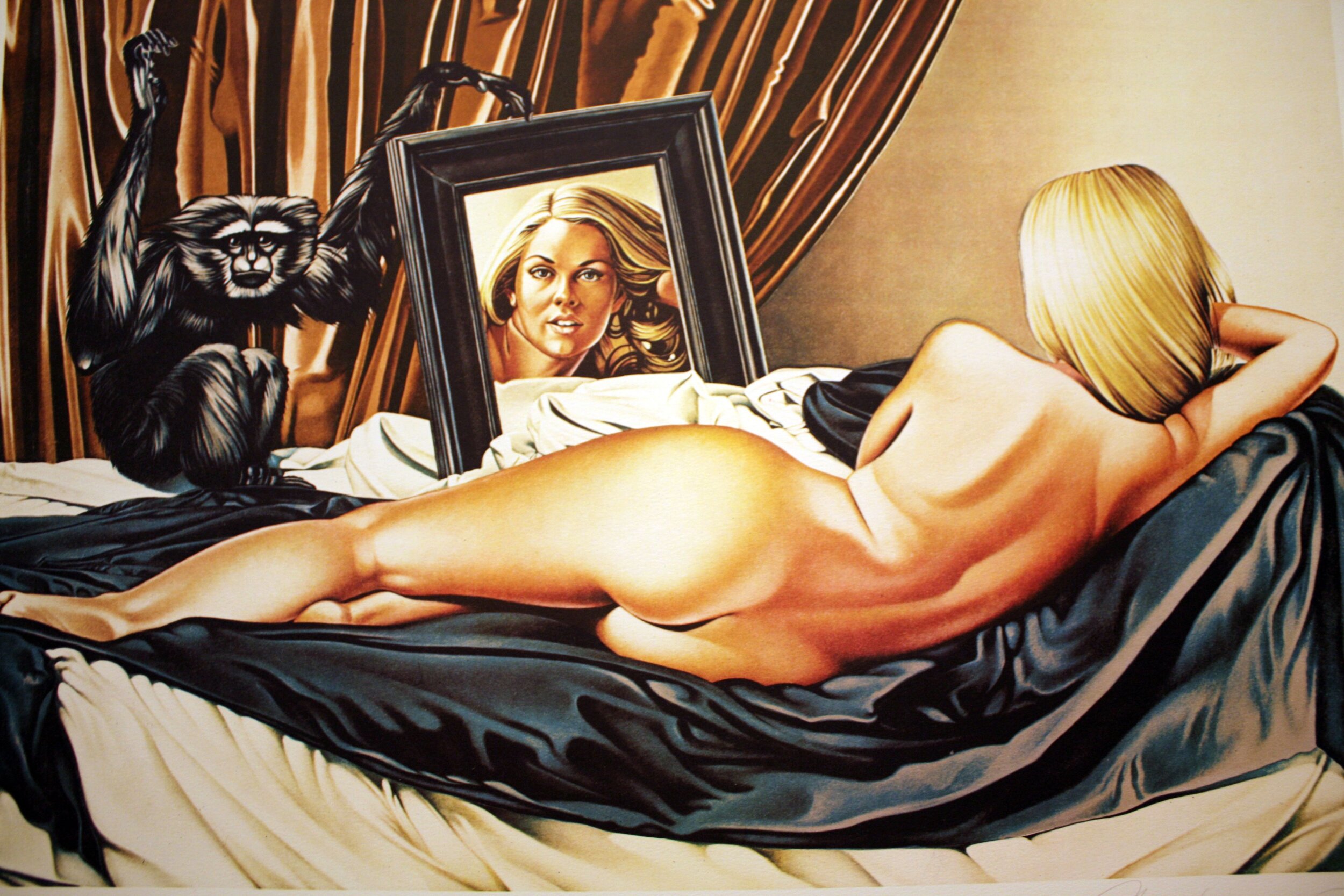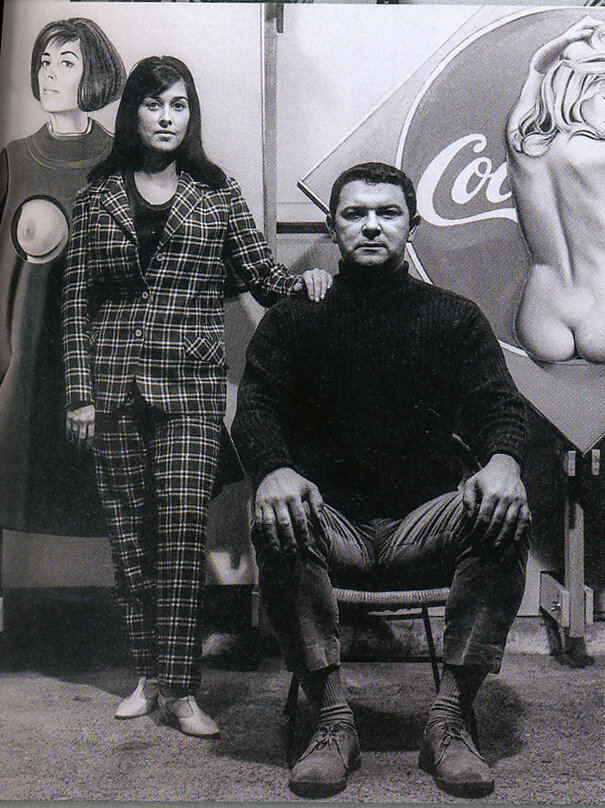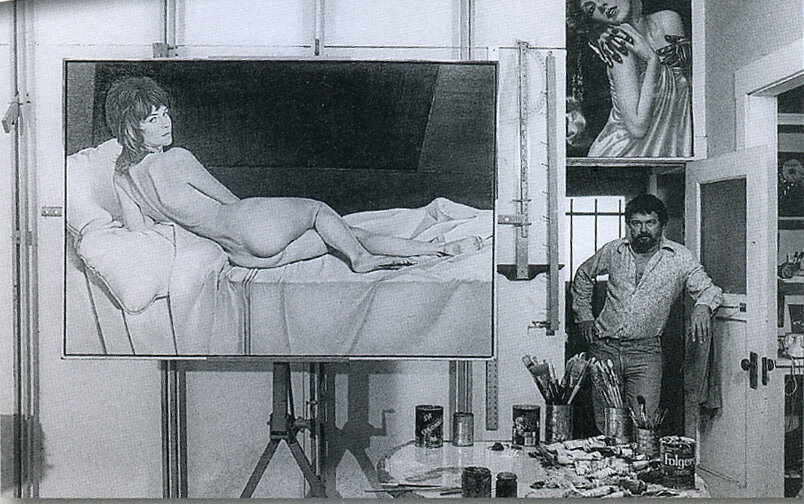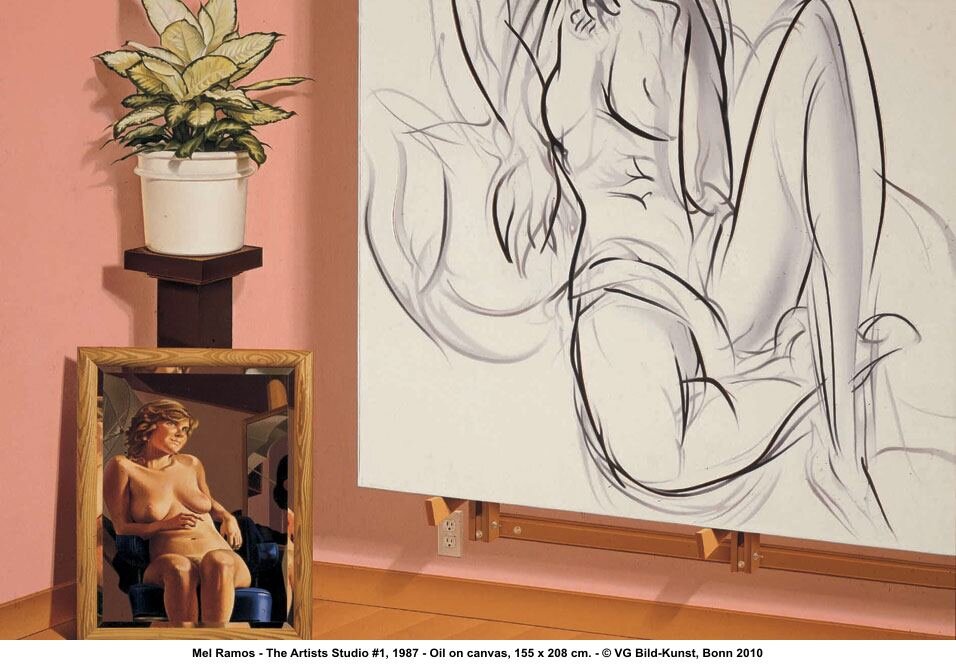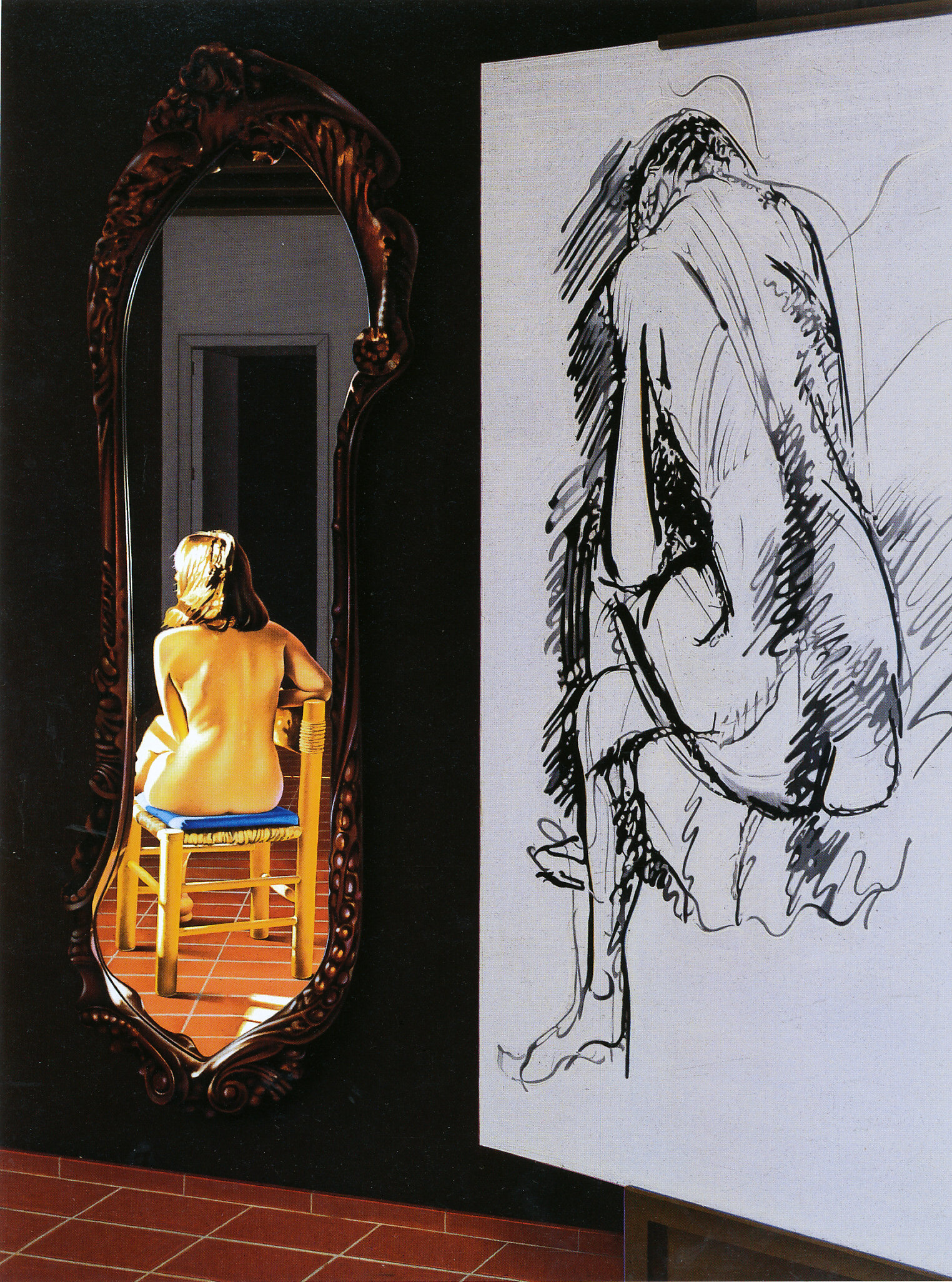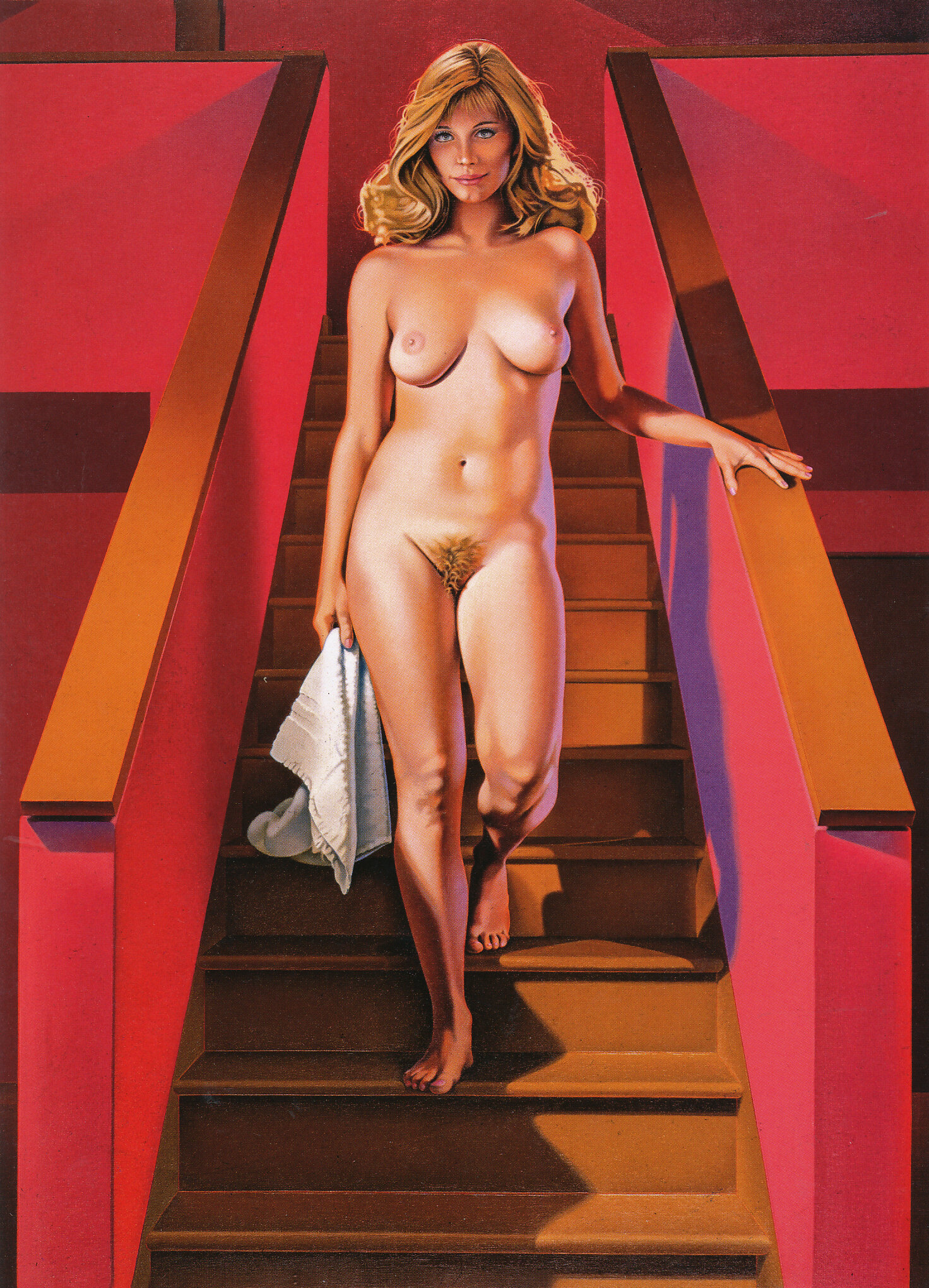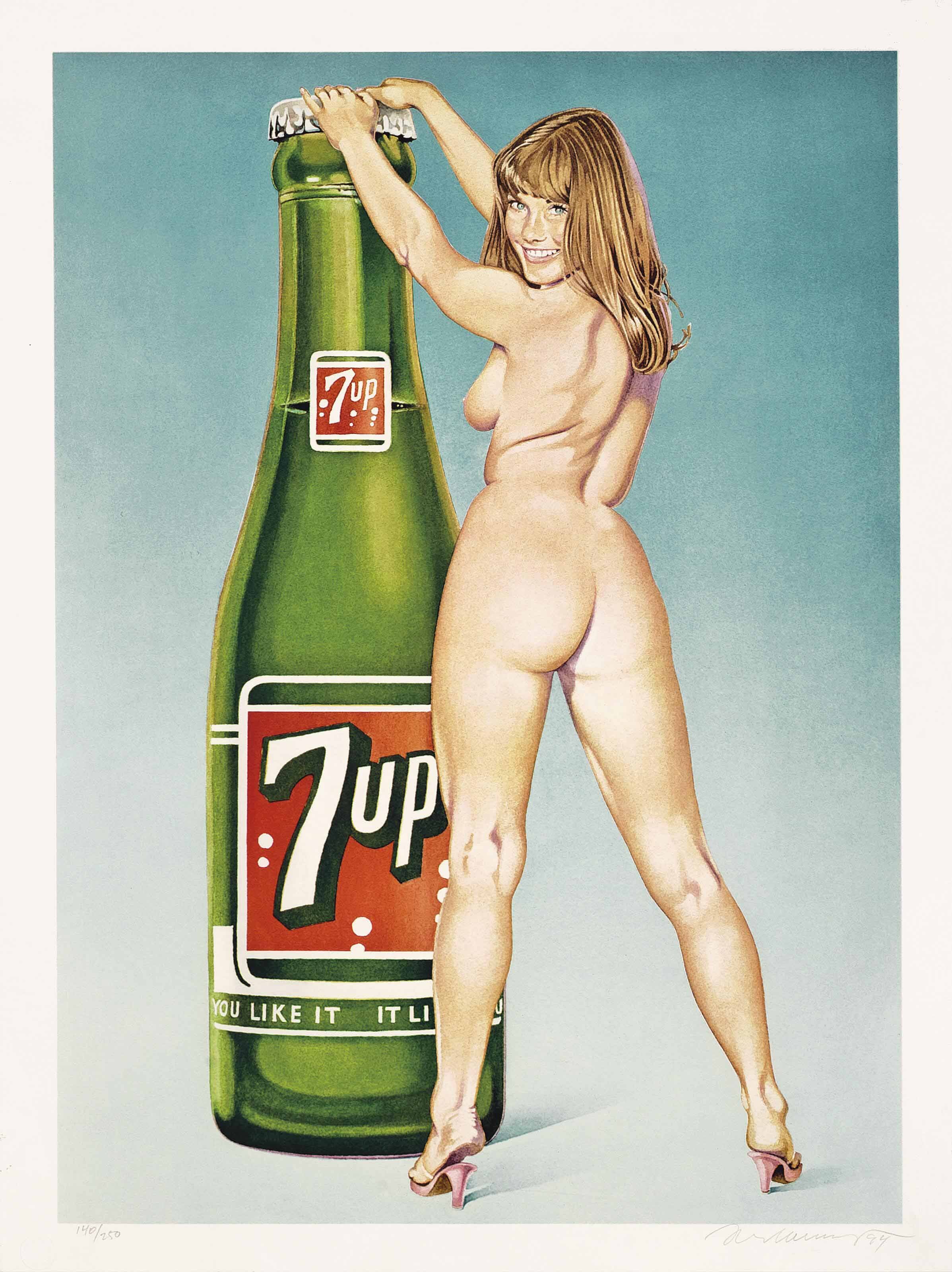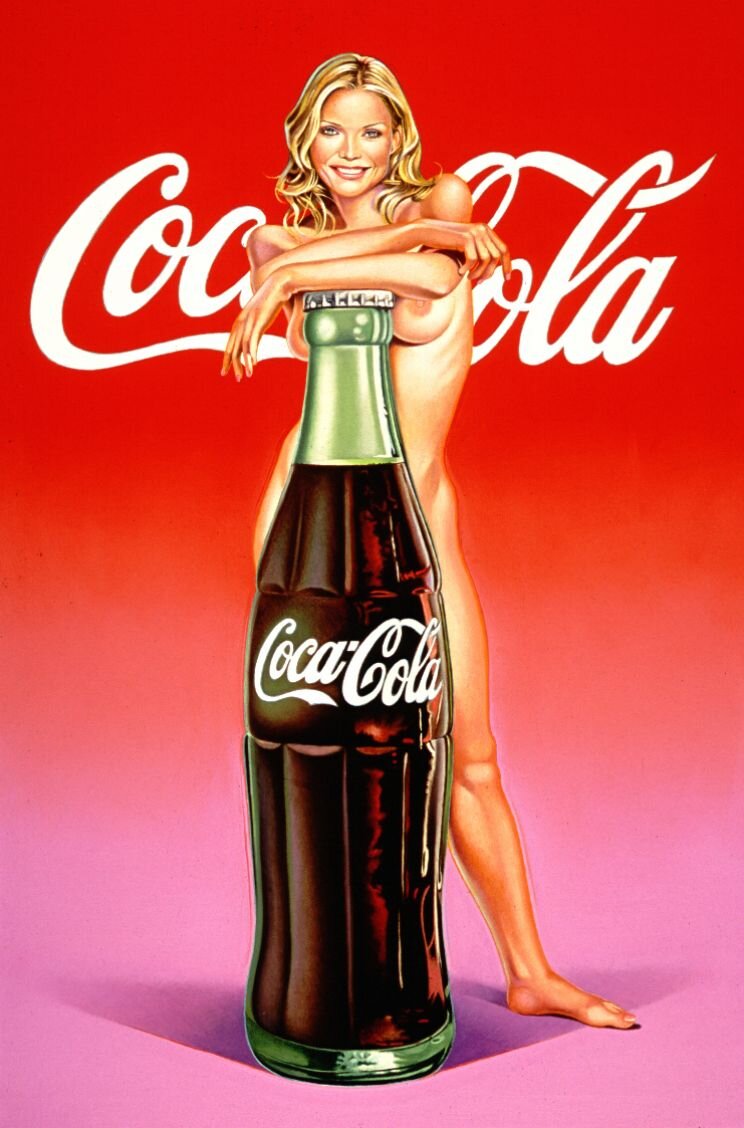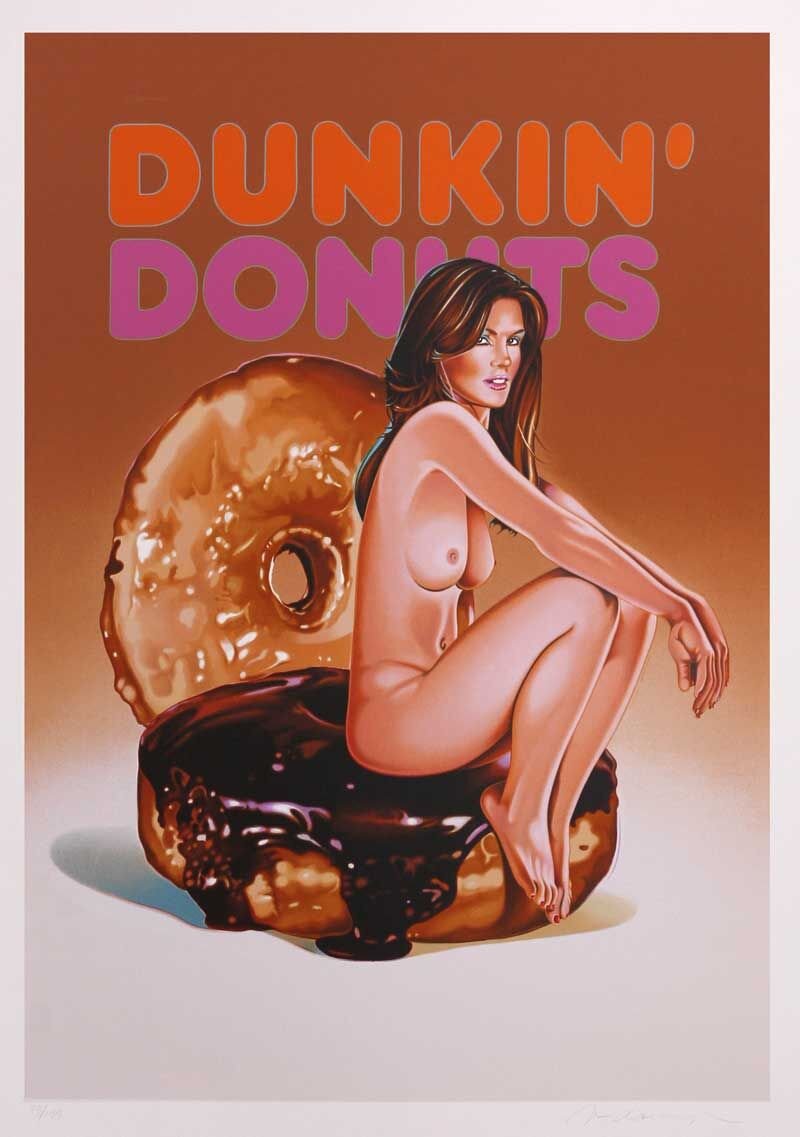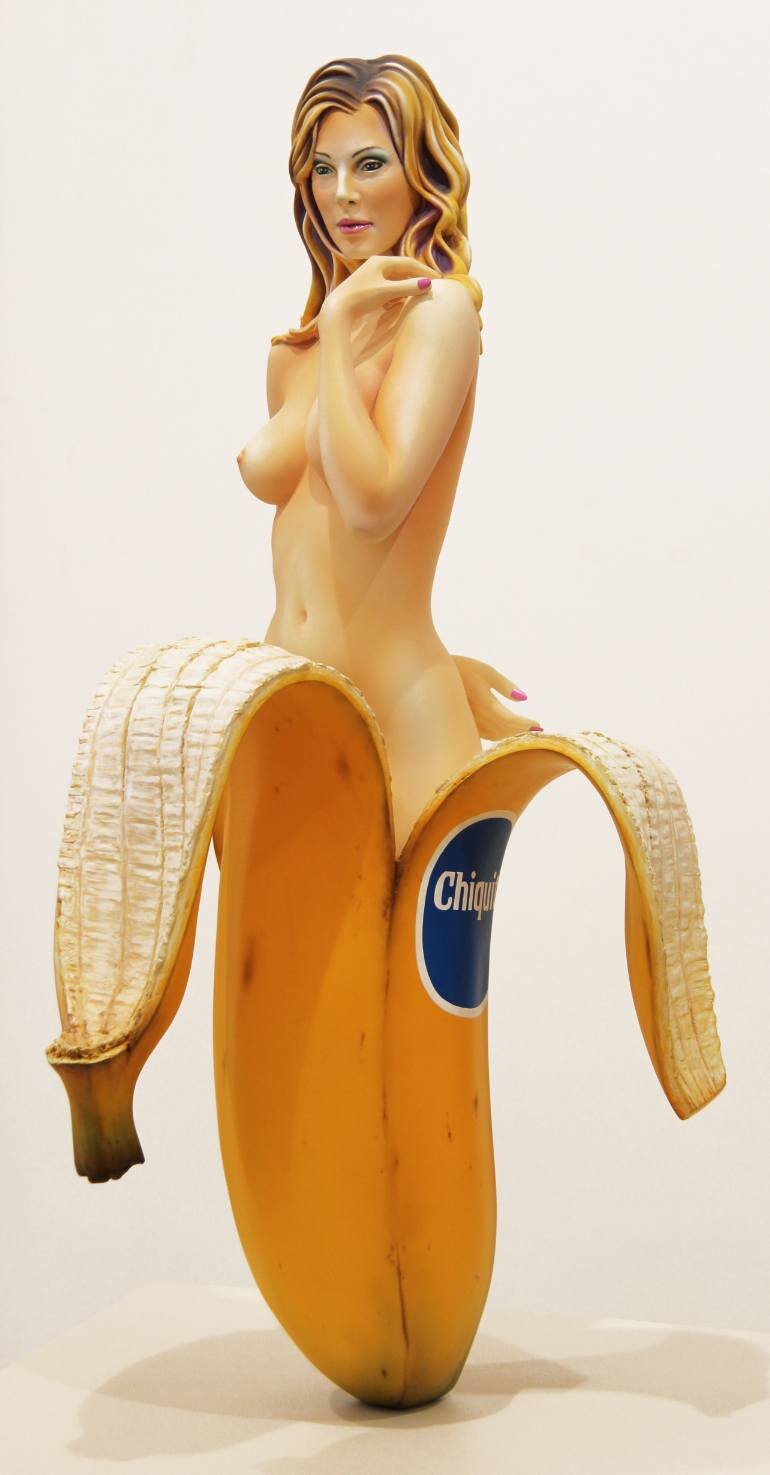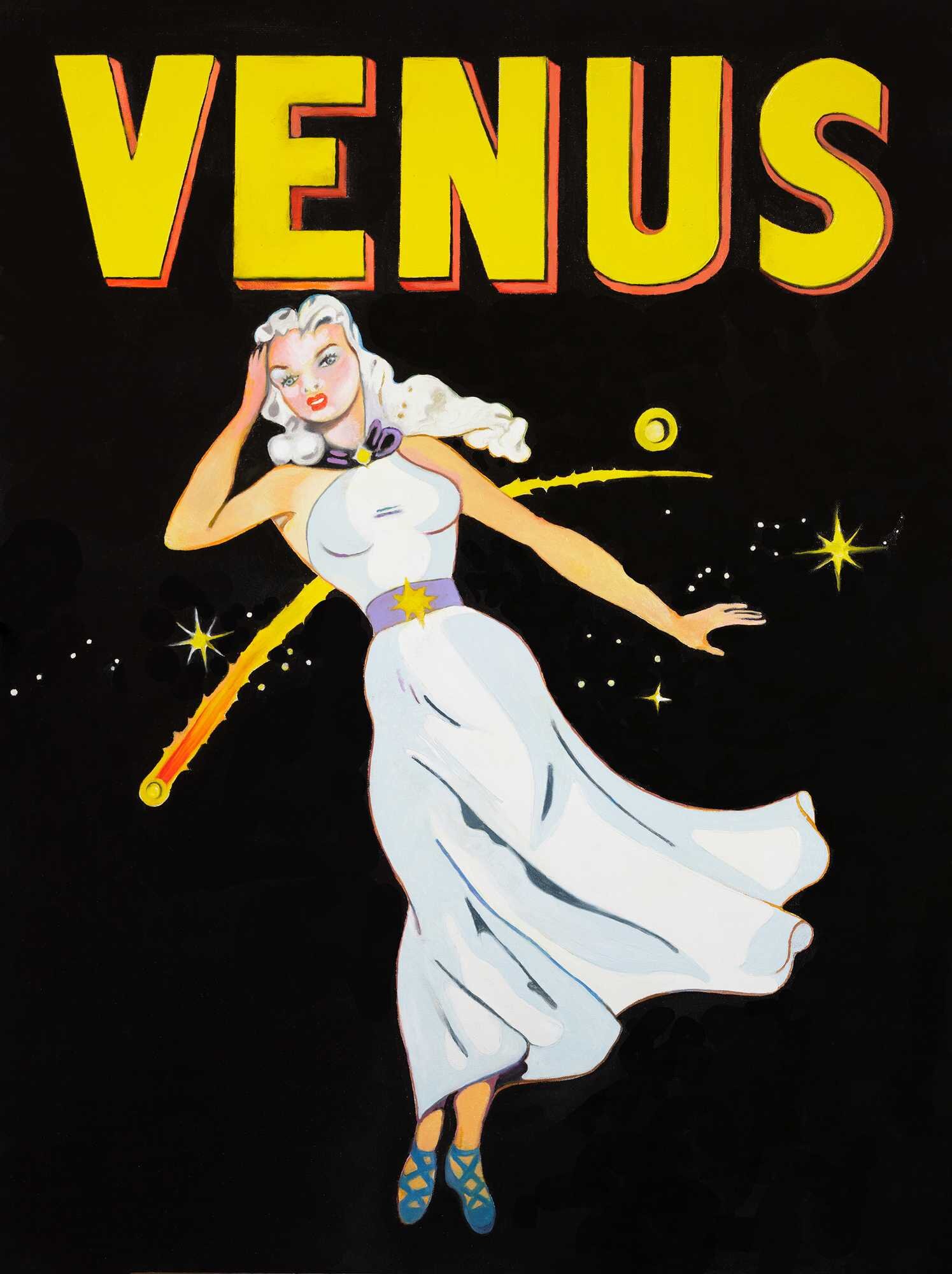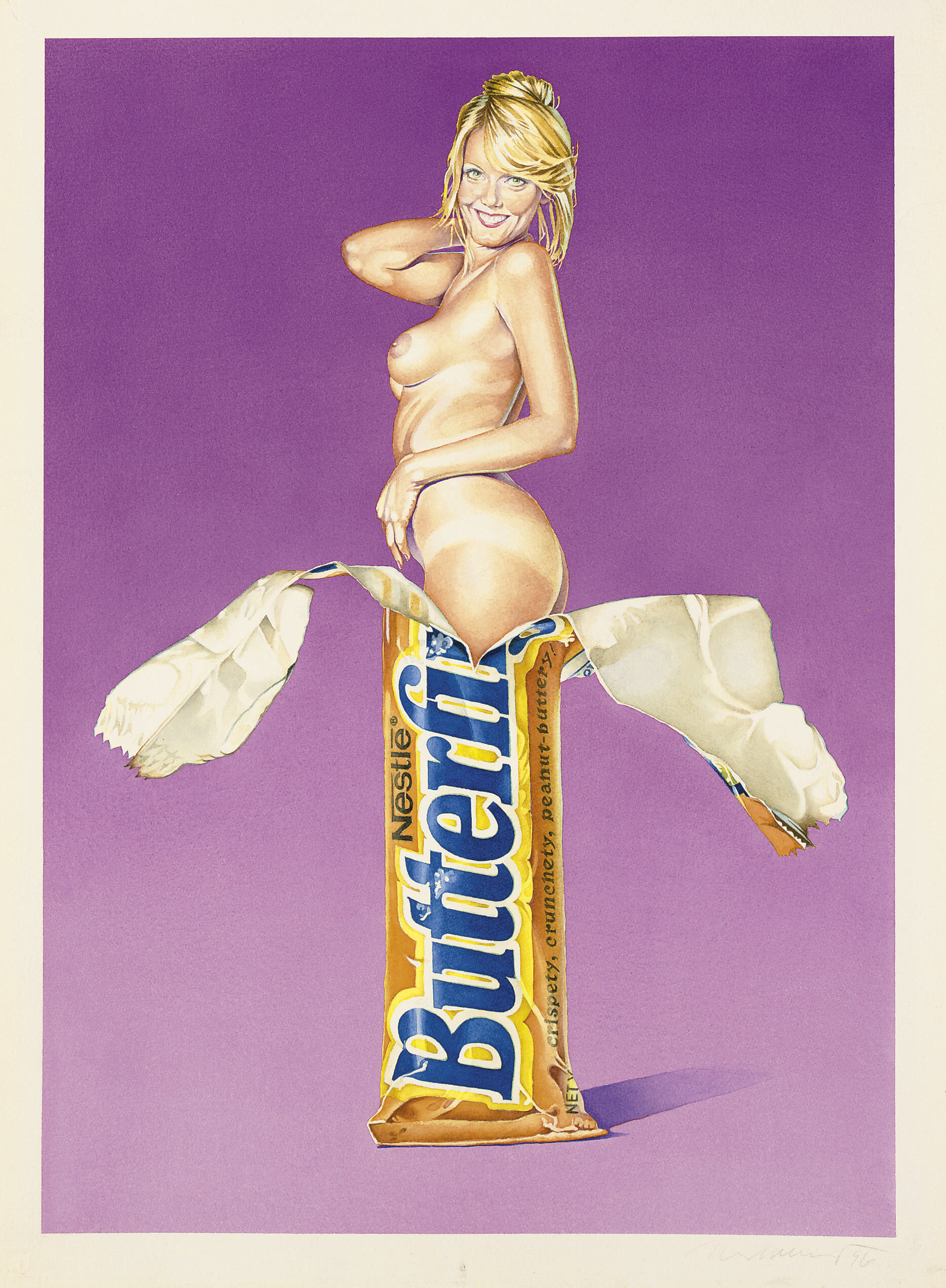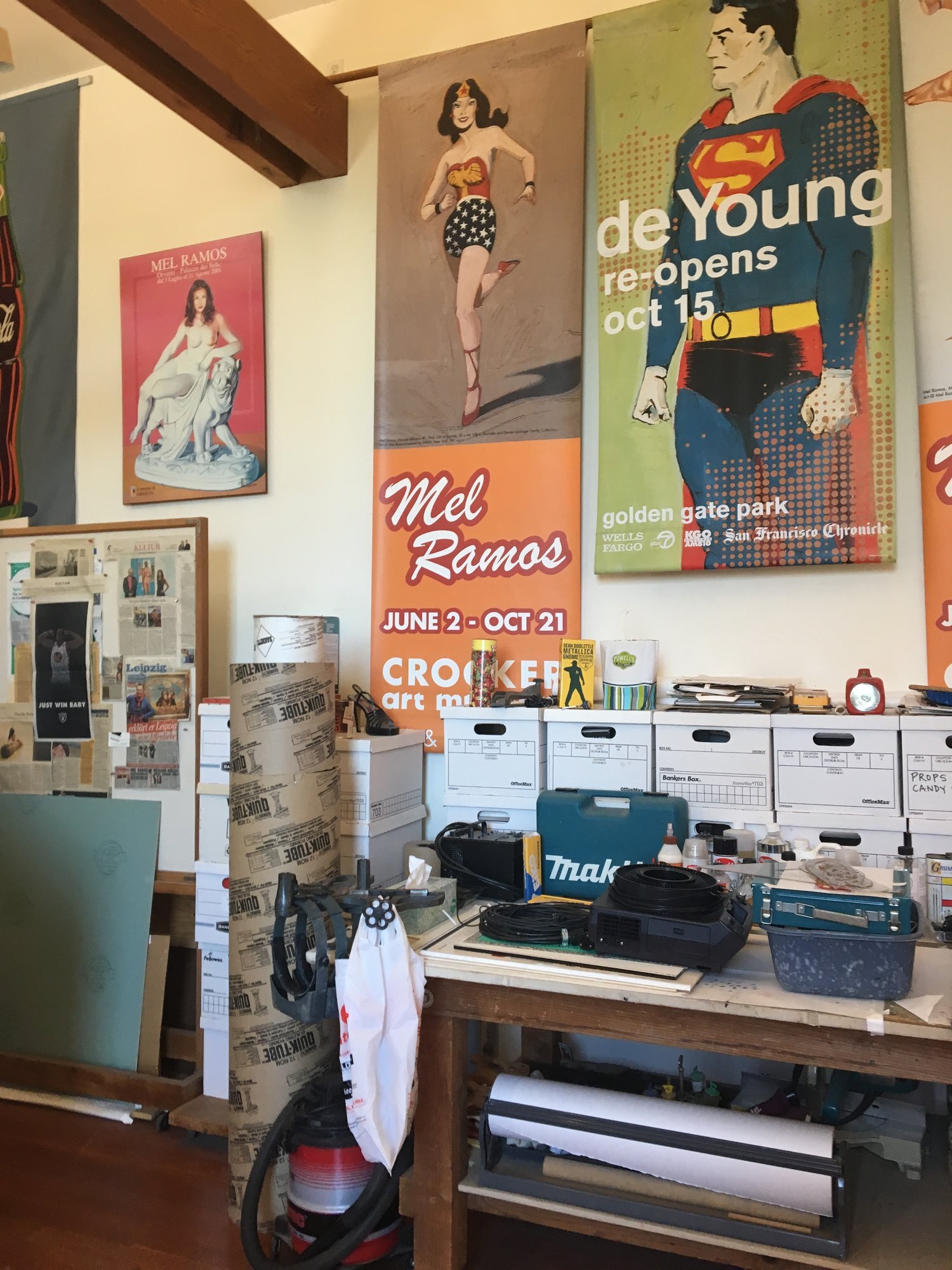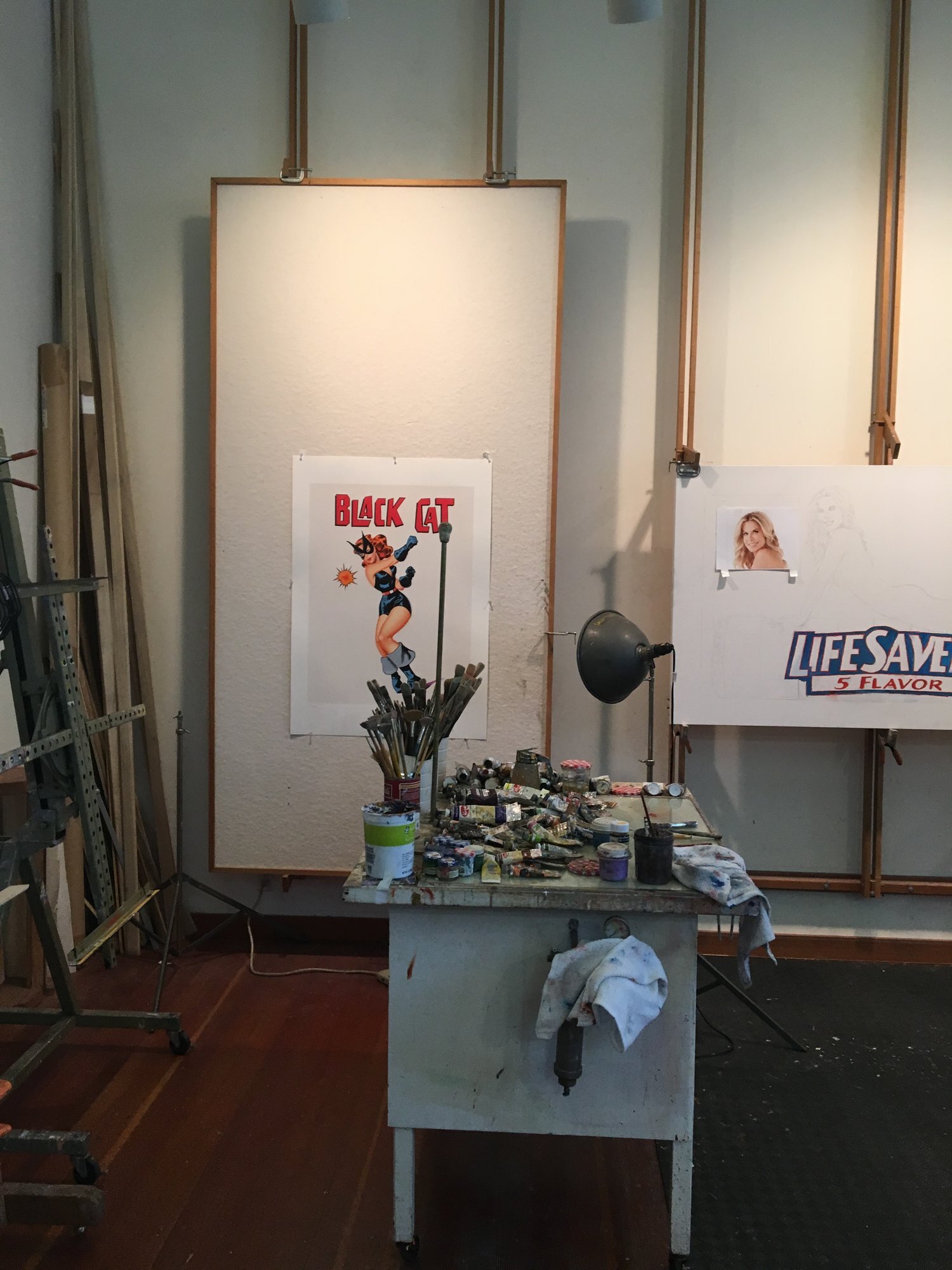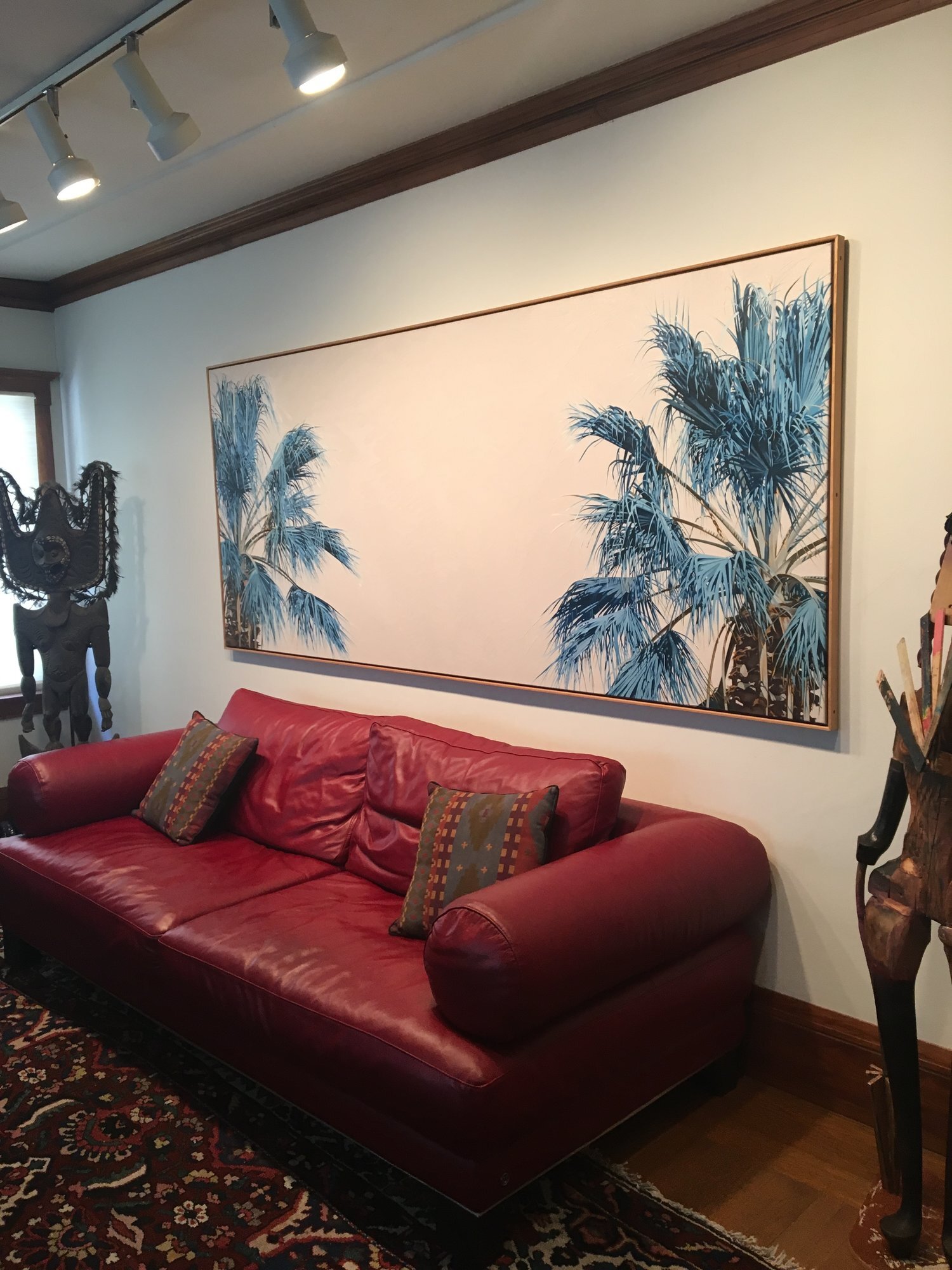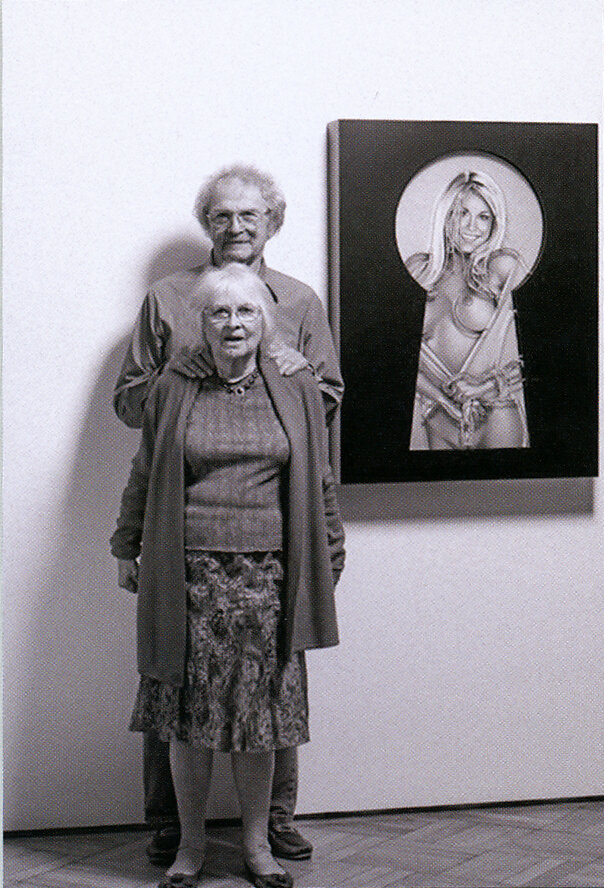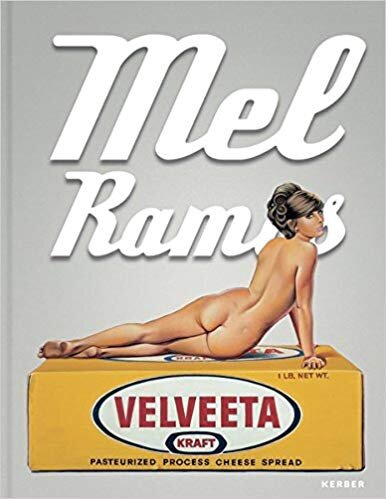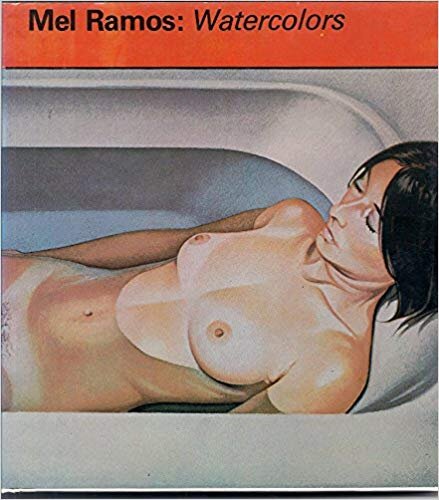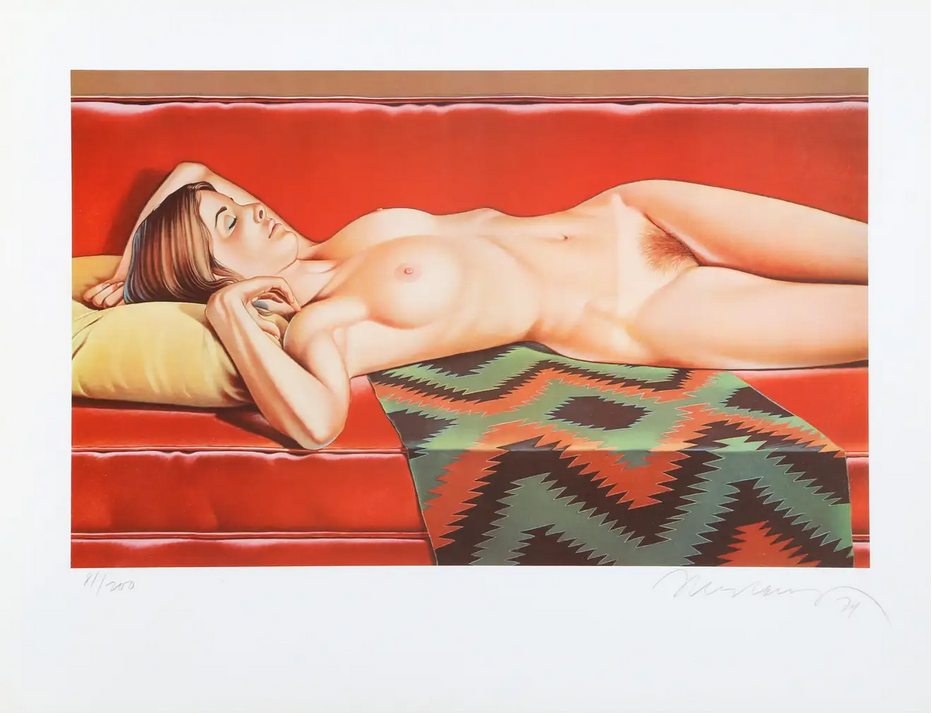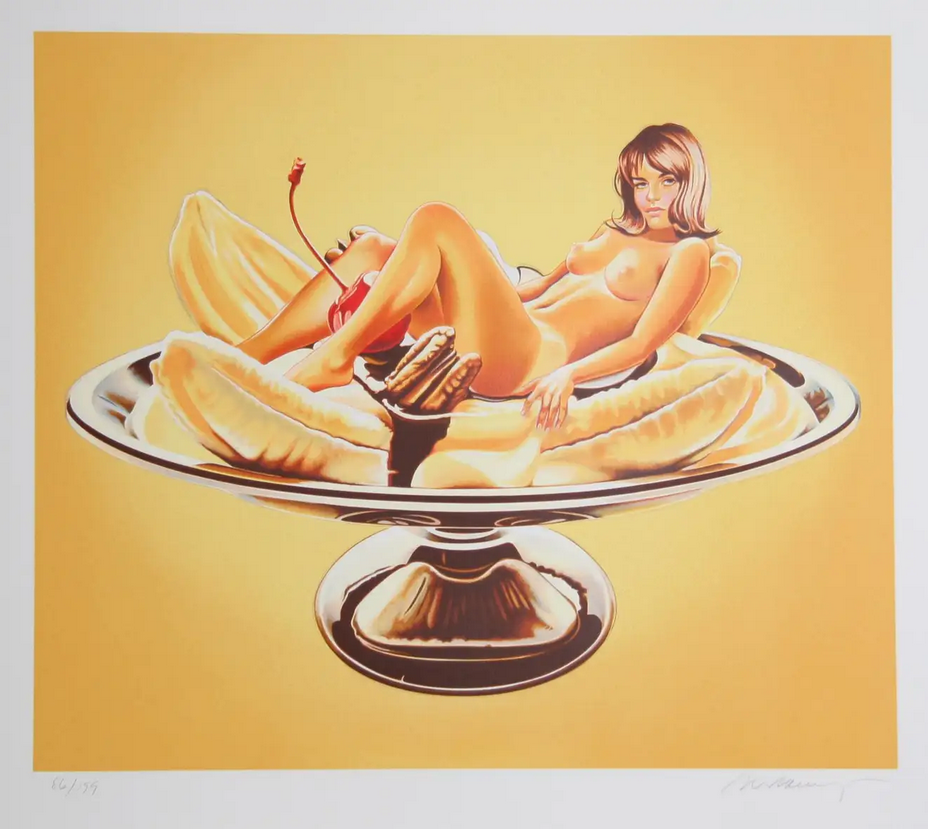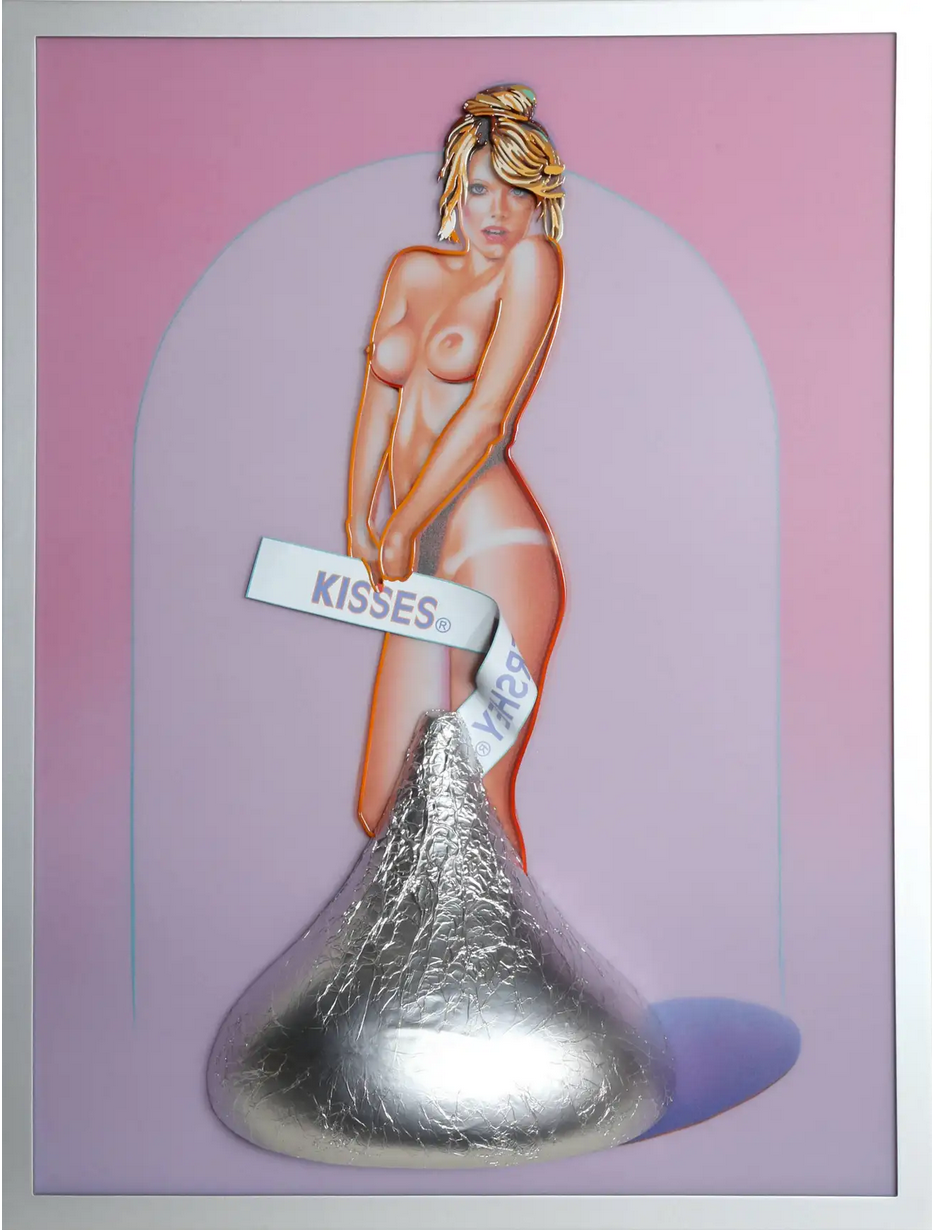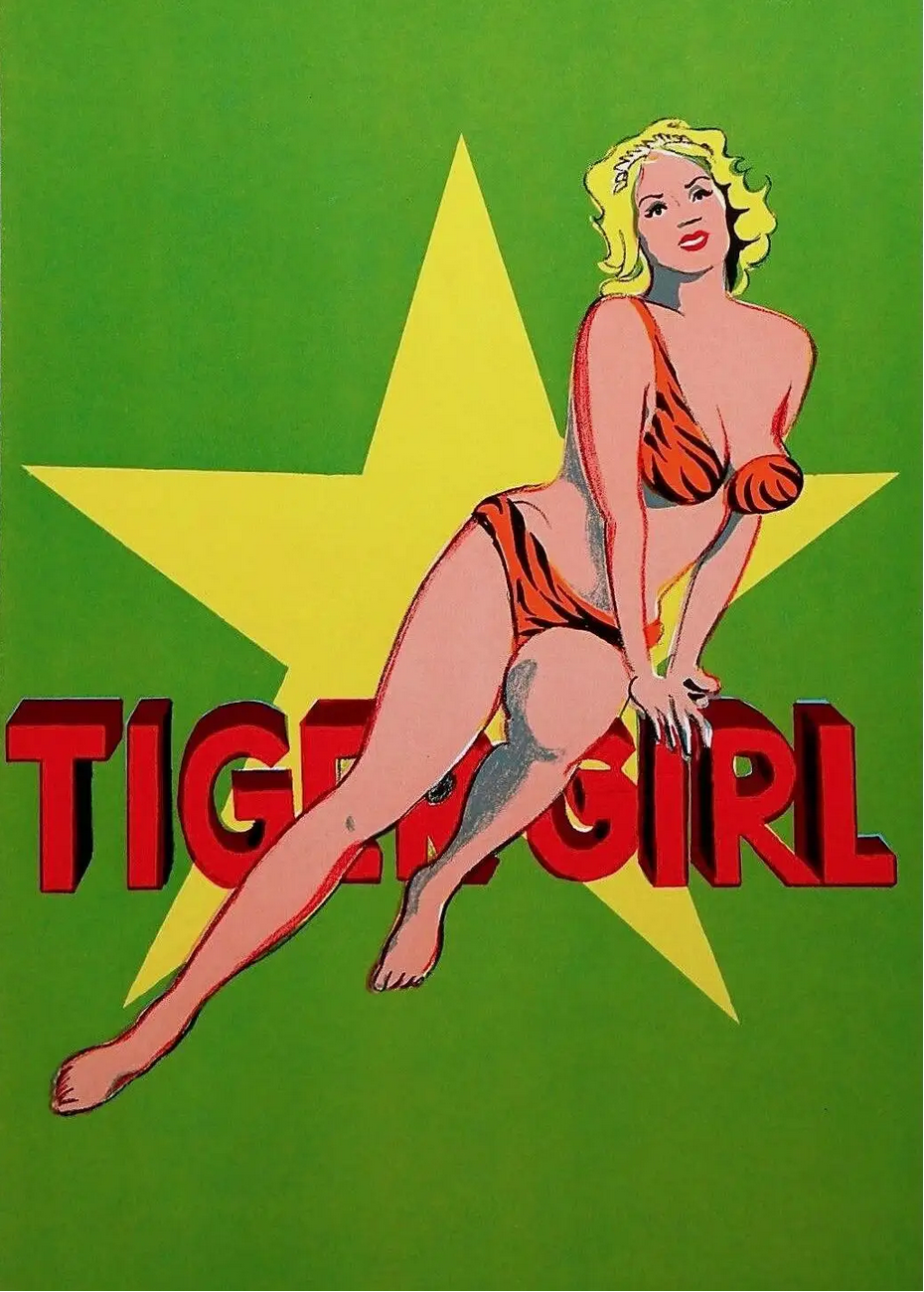Episode 10: Mel Ramos
Originally recorded and released as Lady’s After Hours podcast, for Lady.
In memory of Mel Ramos (July 24, 1935 – October 14, 2018)
With this series of interviews I have been seeking out cultural creatives who have not only achieved great success in their careers, but who have intentionally molded their lives around their passions.
Mel with "Miss Navel Orange #2," 1964.
In June 2018 I had the wonderful opportunity to meet with the famous pop artist Mel Ramos at his home in Oakland, California. Now one of the last surviving members of the pop art movement, Ramos gained fame and notoriety in the mid-1960s for his paintings that combined commercial goods and idealized female nudes. Deriving his motifs from mass media and advertising, his paintings are instantly recognizable—larger-than-life ketchup bottles with a saucy naked girl snuggling up to it; a coy corn-fed beauty emerging from a cornhusk in front of the Kellogg’s logo; a leggy blonde perched atop a giant pack of cigarettes.
"A.C. Annie," 1971.
The son of Portuguese-Azorean immigrants, Ramos was born in Sacramento, California, in 1935. In high school he made his first forays into art—illustrating posters for events at his school. During a career day, Wayne Thiebaud came to speak to students about the graphic arts. Then a teacher at Sacramento City College, Thiebaud so impressed Ramos that he went on to study art at a local community college before getting his BA under Thiebaud’s tutelage. Ramos’ early works in the late 1950s owe a great debt to the abstract expressionists and the Bay Area Figurative painters, yet by the 1962 he began to slowly evolve his signature style. Taking from Thiebaud a reverence for art history, expressive brushwork and mass-produced objects, Ramos began a series of large-scale figurative works of superheroes. Alongside Andy Warhol and Roy Lichtenstein he was one of the first artists to use comic book illustrations in his work. He found fame exhibiting alongside his contemporaries and friends—Warhol, Lichtenstein, Claes Oldenburg, James Rosenquist, Tom Wesselman, and Robert Indiana.
A series of female comic book characters followed, and over the next two years these powerful Amazonian women slowly morphed into vivacious nude girls who he placed in somewhat absurd compositions next to wild animals, fruit or candy bars. Playing with the idea that advertising uses sex to sell anything and everything, Ramos called these “commercial pin-ups.” For many feminists (like Judy Chicago, as he discusses in this interview) his commentary on the commercialization and sexualization of American culture fell flat—they instead described his work as crass and sexist. This assessment, in my opinion, negates the humor and insight found in his mash-ups—for all their perverseness, there is a very strong message about the American psyche. For these are really American paintings—the girls look like the ultimate California dream girls of the movie screen, and the products are those found in every store across the country.
Unlike his contemporaries, Ramos chose not to move to New York to focus on his art career—as he was married with children he stayed in Northern California, taking teaching jobs instead of chasing fame and fortune. While many might view this as a sacrifice, for Ramos it was about making a decision based on his values—what was truly of importance in his life. He was a professor of art at California State University, Hayward, for 33 years, before he retired in 1997. He continued painting and exhibiting throughout his teaching years—creating new bodies of work that included reworkings of famous paintings in art history, enigmatic sparse landscapes, and paintings that depict a drawling lesson in mid-class with the nude model and sketched canvas. In the early 1990s he began revisiting his early commercial pin-ups, which have remained his focus since his retirement.
Mel and Lena Ramos at their home in Rockridge, California, in 1978.
Now 82 Ramos continues to paint every day, though a few months before we met he had a bad accident that has slowed his pace of work. As you can see in the final images of the above slideshow, his studio was an artist’s dream—high ceilings and lots of light, candy wrappers artfully arranged, posters and examples of his paintings everywhere. All signs point towards a man who has achieved great career success yet has still lived an intimate, intentional life. Ramos has created one where he is surrounded by what matters to him most—family and art. His daughter is his studio manager, and he still dotes on his wife of 63 years. Stricken with dementia, Leta made a quick visit during our interview and provided some of her own memories of being his favorite model. As someone who has long admired his paintings—both for their technical virtuosity as well as the vital, healthy beauty of the women he portrays—it was an honor to speak with him. Led by his passions and by the importance he placed on family and a good work/life balance, Ramos (like many other subjects of this series) has been able to create a life of intention and beauty while also giving joy to his many fans.
"Gee Gee," 1997.
“The Four Seasons, Autumn,” 1982.

